Handmade Art Meets High Horology: The Patek Philippe 5160G-001 Grand Complications Perpetual Calendar
Patek PhilippePublished by: Christopher George
View all posts by Christopher George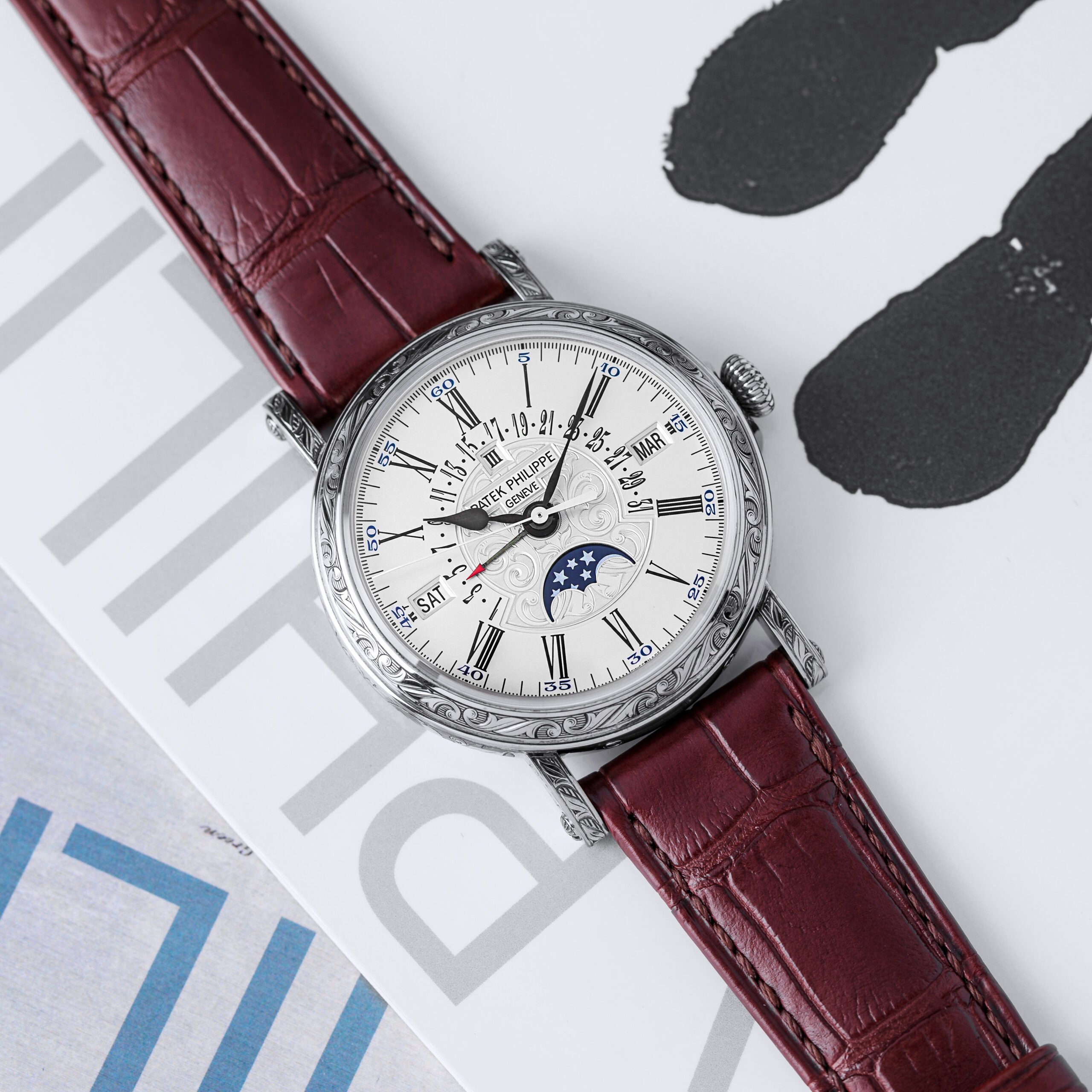
In this modern era, there is no actual reason anyone needs a mechanical watch, so they are a form of expression, status, and even collected as a piece of art. The Patek Philippe 5160G-001 Grand Complications Perpetual Calendar is the epitome of all these aspects combined. It ties in artistic expression, modern mechanical engineering, and a nod to watches of the past.
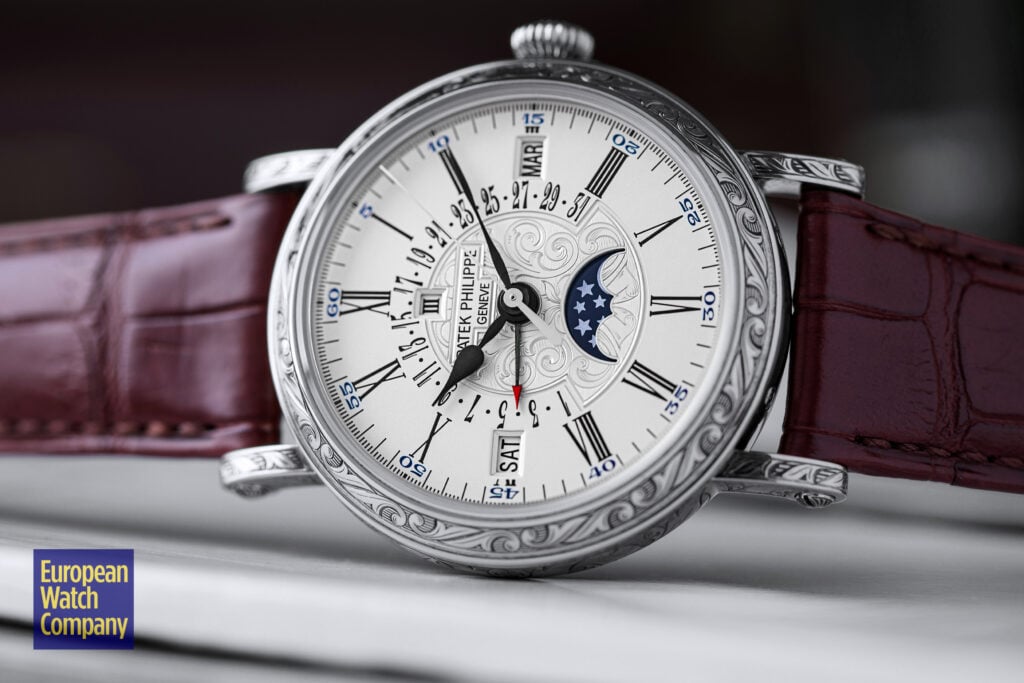
History
Patek Philippe was the first watch manufacture to make a perpetual calendar wristwatch. It was introduced in 1925, and it had a beautifully hand-engraved case. Patek would specialize in high complications like the perpetual calendar, so it produced many variations moving forward. In 1993 the brand created the 5050 series of perpetual calendars. This was the first Patek wristwatch to have a perpetual calendar with a retrograde indication. Next, the introduction of the 5059 series arrived in 1998. The 5059 differed from the 5050 by using an officer’s style case, large straight lugs, and a half hunter caseback. Then in 2010, this 5160-001 was released, showcasing the perpetual calendar retrograde in an officer’s style case that is immaculately hand engraved like the original perpetual calendar from 1925. In 2016, the current version of this timepiece was the 5160/500G which has a few variations on the engraving style and uses Arabic numerals instead of Roman numerals.
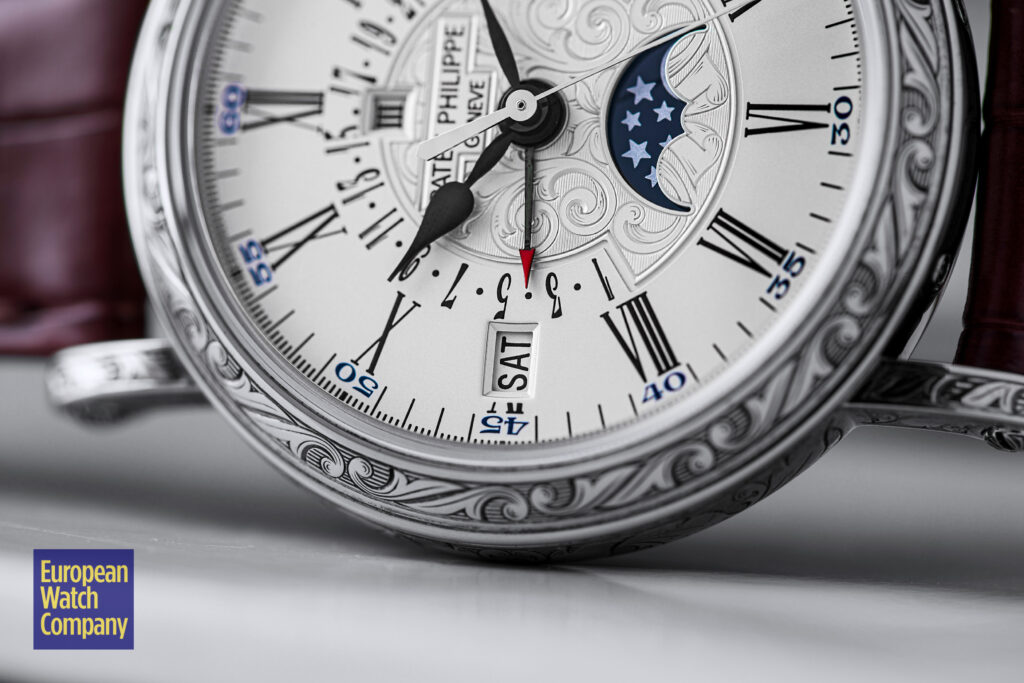
Design Details
This timepiece is an actual work of art, from the case to its dial and everything in between. Anyone viewing this piece will first notice the lavishly decorated hand engraved 38mm white gold officer’s style case. That engraving covers the half hunter caseback in a style reminiscent of what one might find on highly decorated guns from the likes of Holland & Holland. The decorated straight lugs fitted to the 12mm thick case are meant to emulate the officer watches of the early 1900s, which were essentially pocket watches turned into wrist watches by welding lugs onto the case. Even the buckle, the crown, and the screws that hold the alligator strap in place are ornately decorated.
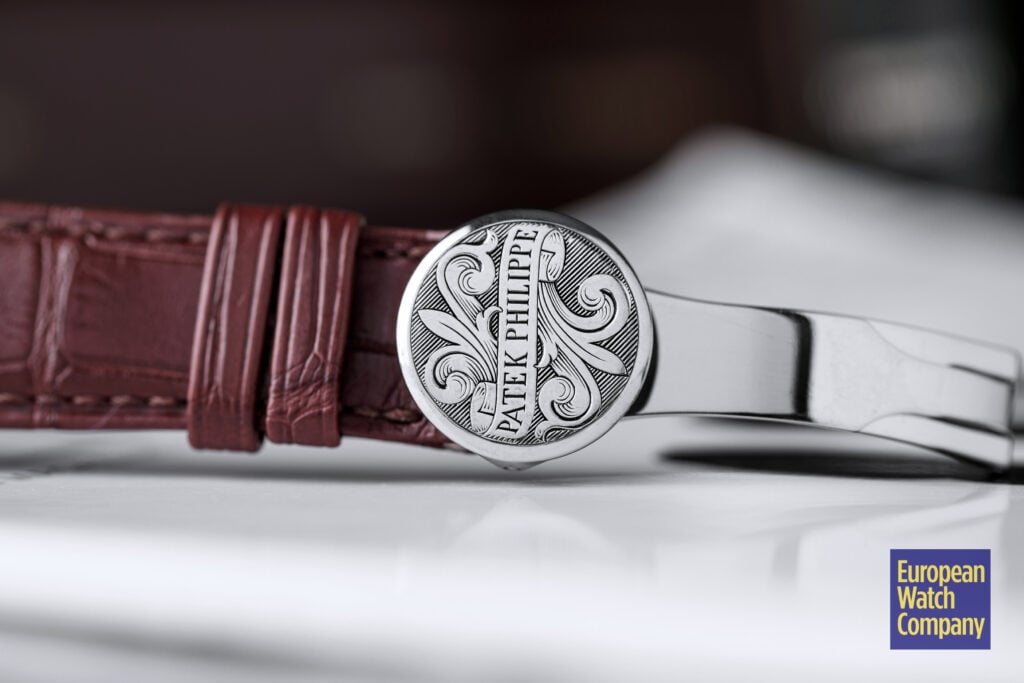
The dial itself deserves just as much attention as it elegantly displays all the timepiece’s information in a unique fashion. First, the retrograde date draws the eye and separates the dial. The date is indicated with the red-tipped hand that points to the date, which is displayed with alternating Arabic numerals to save space. All hands stem from the center, and each is distinctly different from the rest. The central second hand is white gold, while the rest are a dark oxidized gold. The large spade hour hand points to the painted black Roman numerals, and the longer, narrower double spade minute hand points to the painted blue Arabic numeral minutes indicators with black minutes track. Below the hands is the silver opaline dial with a guilloche design, much like the engraving on the case. A blue moon phase indicator near the 6 o’clock position helps balance the dial against the retrograde date. Lastly, apertures cut into the dial tell the day, leap year, and month at 9, 12, and 3 o’clock, respectively.
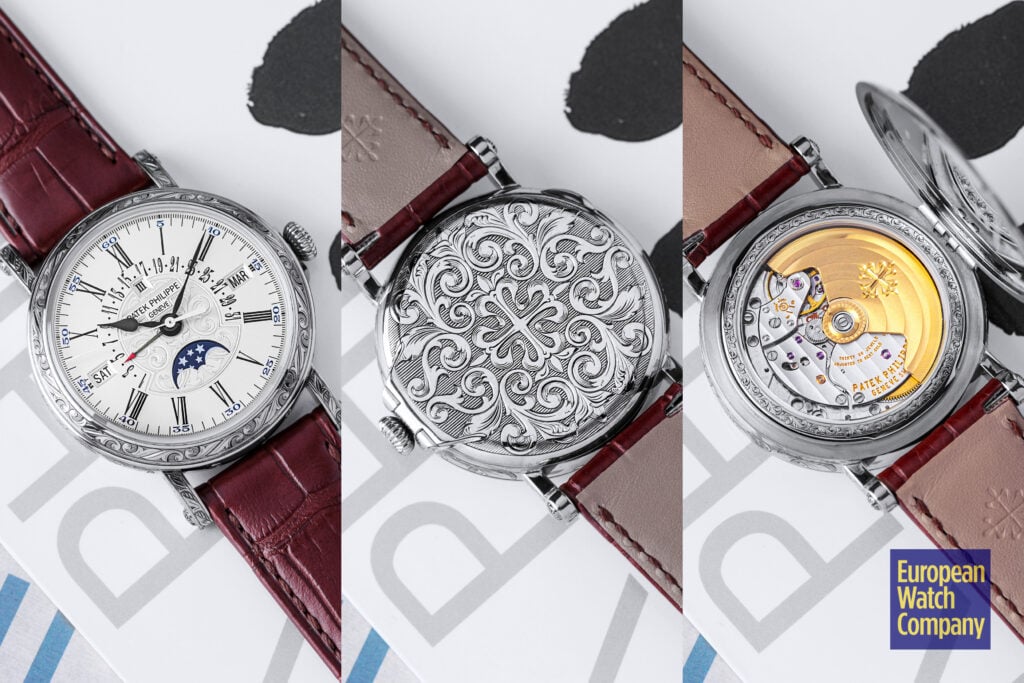
Inner Workings
The heart of this timepiece is the Caliber 324 S-QR automatic movement made in-house by Patek Philippe. This caliber was the successor to the 315 S-QR caliber and features a higher frequency that beats at 28,800 vph and increased jewel count of 31 jewels. This caliber has a 21k gold central rotor that powers this movement’s 45-hour power, decorated with a circular stripping finish and the Calatrava cross engraved in the middle. Under that, one can see the bridges, which have the Geneva stripes and the Patek Philippe seal in gold, a stark contrast to the silver of the rhodium plating on the brass parts. It also uses Patek’s patented Gyromax balance wheel to give it greater accuracy. The movement is quite complex for its small size, fitting 361 parts in its 28mm diameter and just over 5mm in thickness.
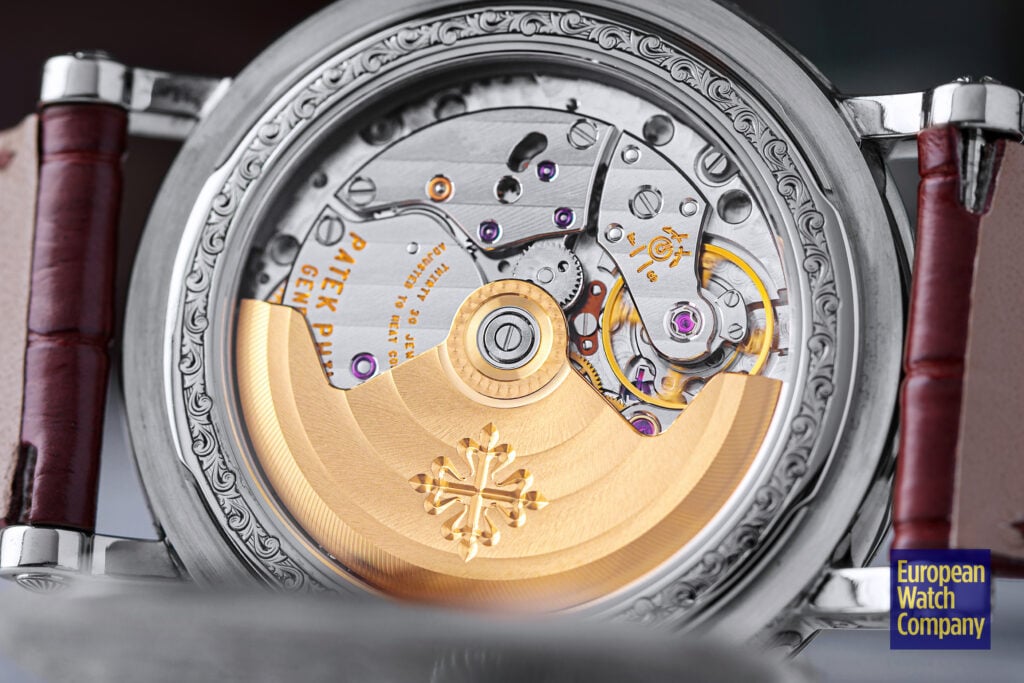
Versus The Competition
When comparing this Patek 5160 Retrograde Perpetual, one might consider the Patek 5050, such as this rare Patek Philippe 5050J-023 in yellow gold with the slate grey dial. While this 5160 is very rare, with an estimated quantity in the 20s, this 5050J might even be rarer, with an estimated production of about five pieces. The 5050J has a more traditional case that might be easier for some collectors to wear on a more frequent basis. Both pieces have a similar dial layout, but the 5050J uses the older 315 S-QR caliber. The rose gold applied Arabic numerals keep the uniformity of font choice on the dial, which contrasts with the 5160’s mixed font choices. Both pieces are similar yet distinctly different and will appeal to many collectors for various reasons.
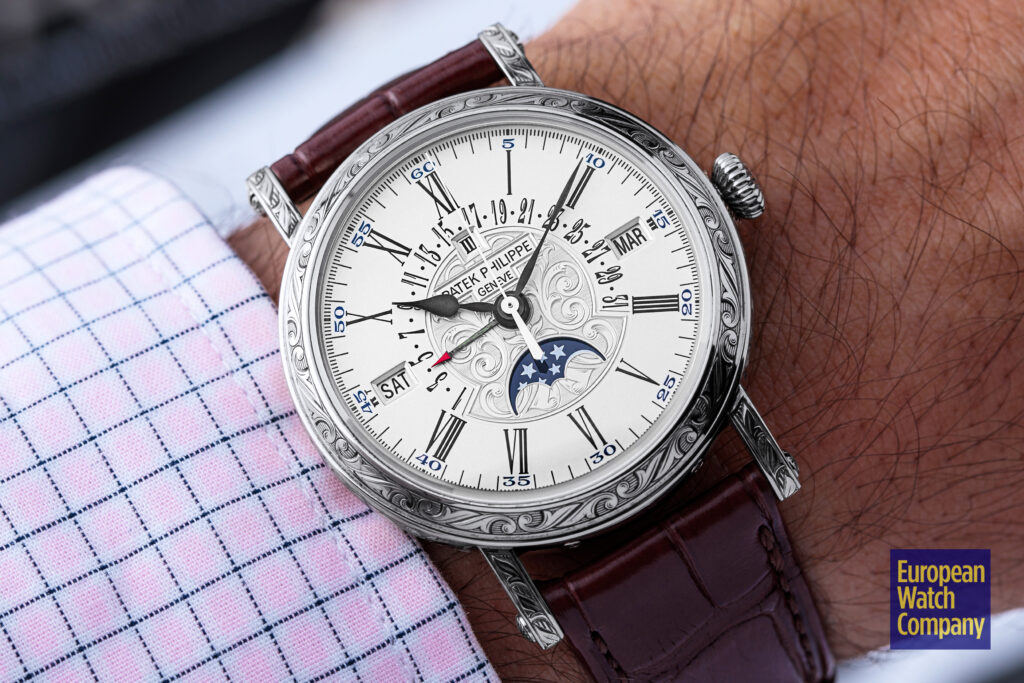
Personality
The collector to whom a timepiece like the Patek 5160G-001 will speak to is an enthusiast of the arts. Someone who appreciates the hours spent making something that will be uniquely one of a kind due to its human element. No two pieces will look identical as each is carved by an artisan. This also speaks to those collectors who value and seek out pieces of history. This timepiece is designed to look like those old officer’s style wristwatches, and the engravings harken back to Patek’s first perpetual calendar. This watch could fit into a vast wristwatch collection, or it might even be at home with a collector of antique pocket watches. Most likely, however, it will be in the collection of a huge Patek Philippe enthusiast as the pride of their collection.
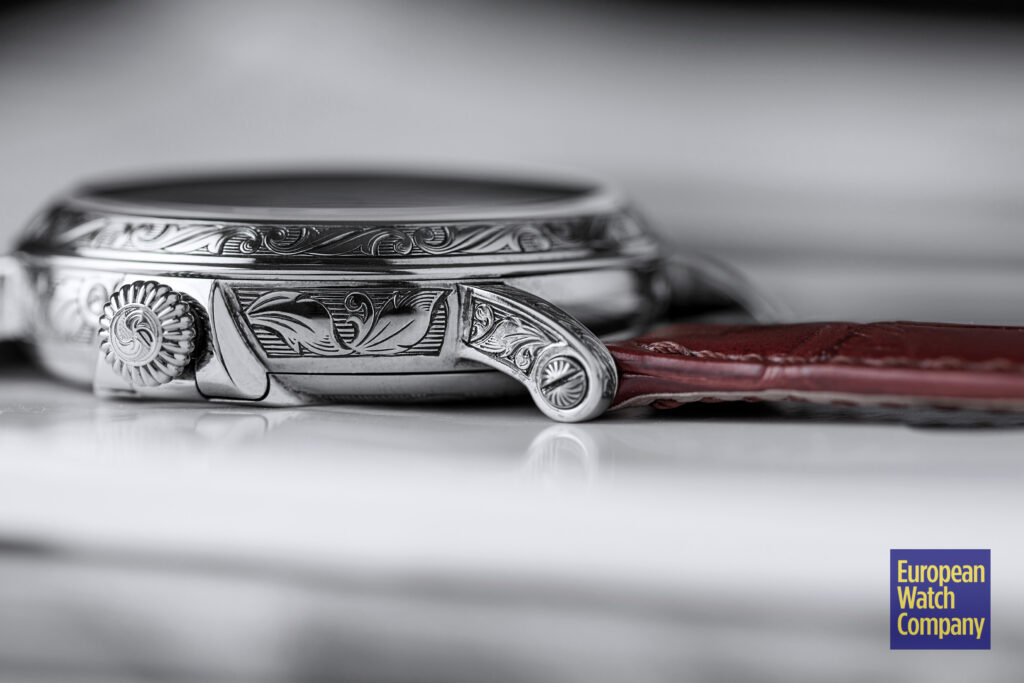
Final Thoughts
The Patek Philippe 5160G-001 cannot be described as a mere dress watch. It is a tribute to art, history, and high horology all in one. Patek Philippe is often described as the pinnacle of watchmaking, and a piece like this could easily be considered an example of why collectors argue that point.
See More of the Patek Philippe 5160G-001 Grand Complications Perpetual Calendar
Visit Europeanwatch.com
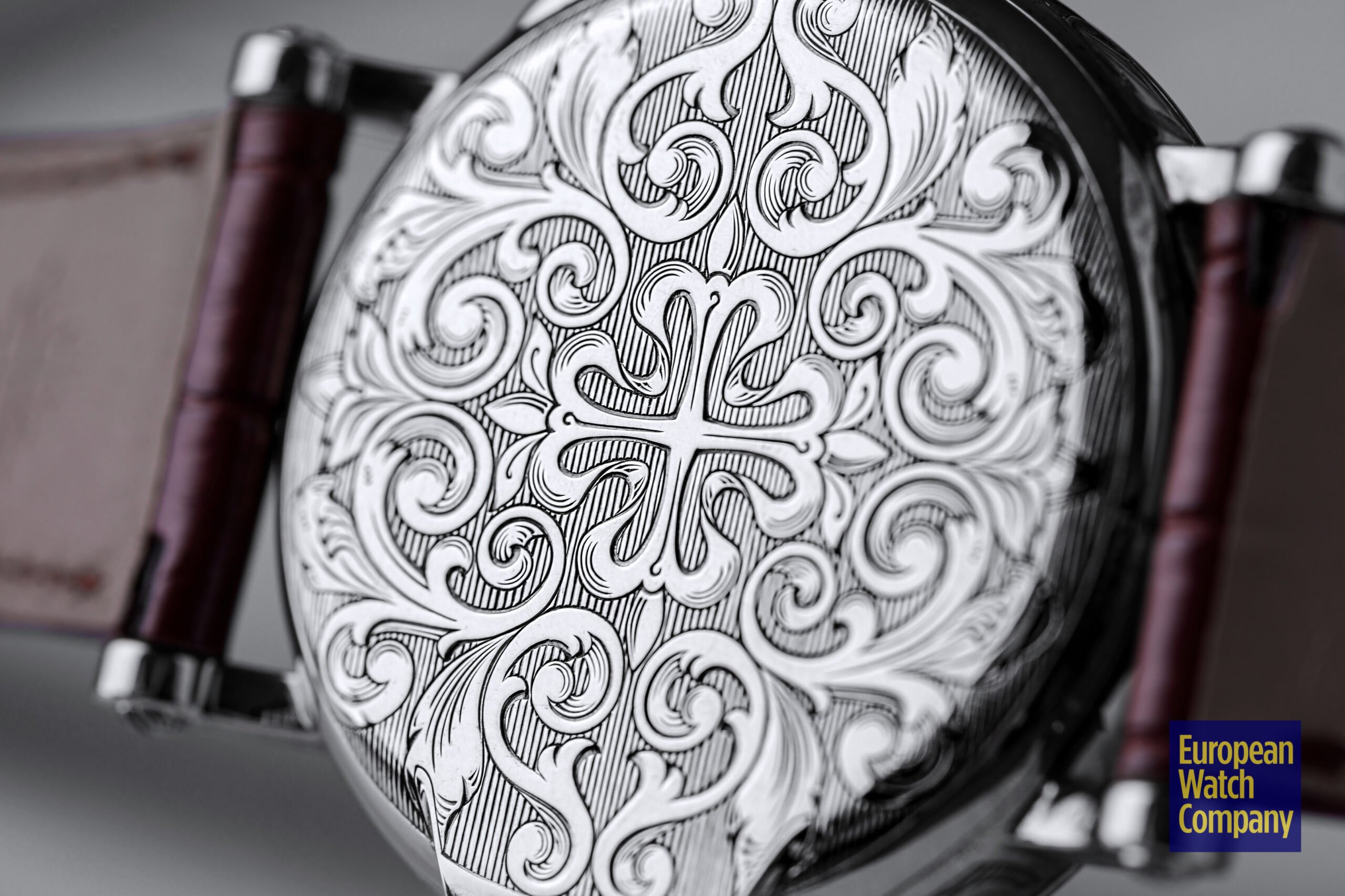
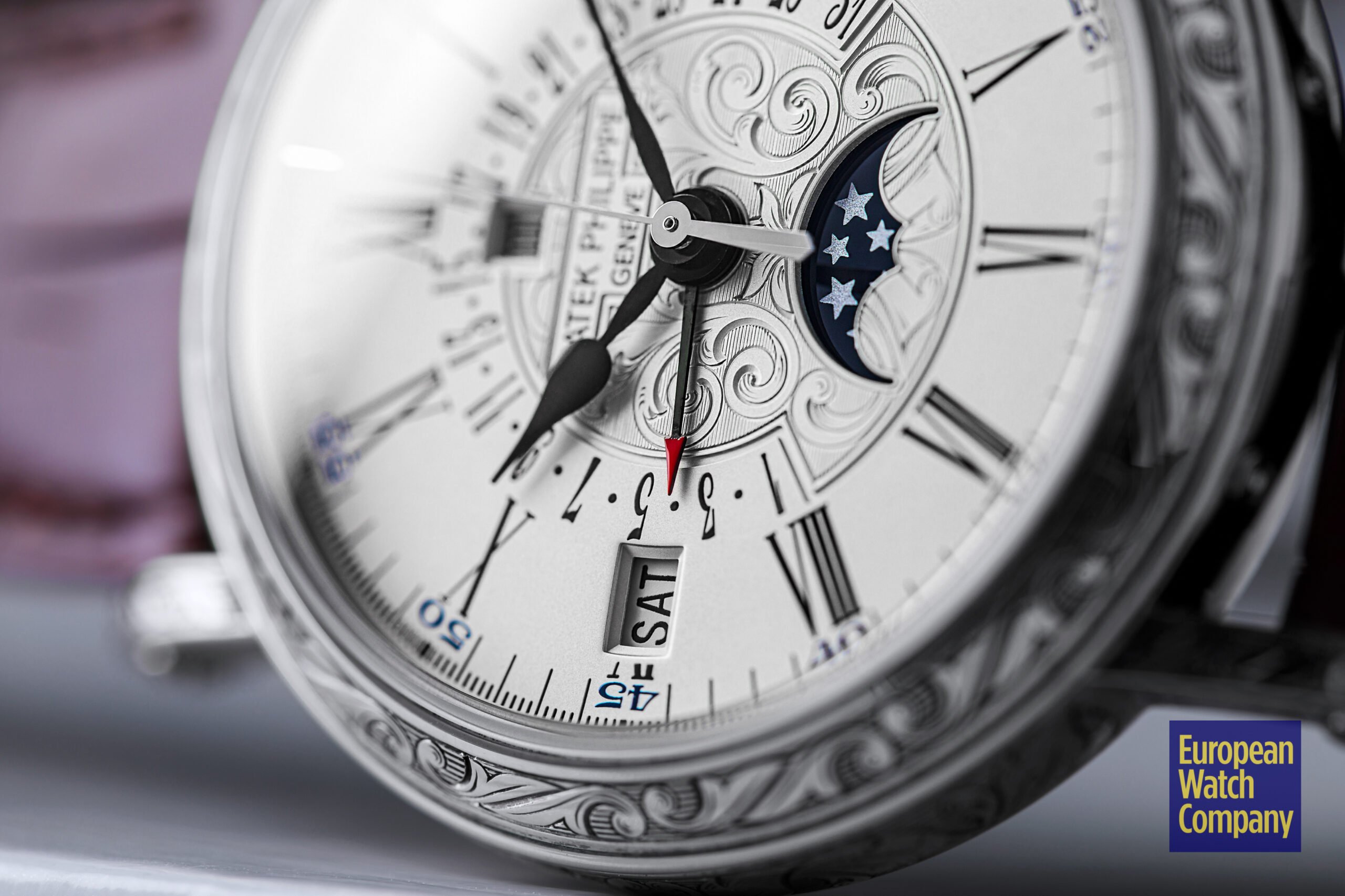
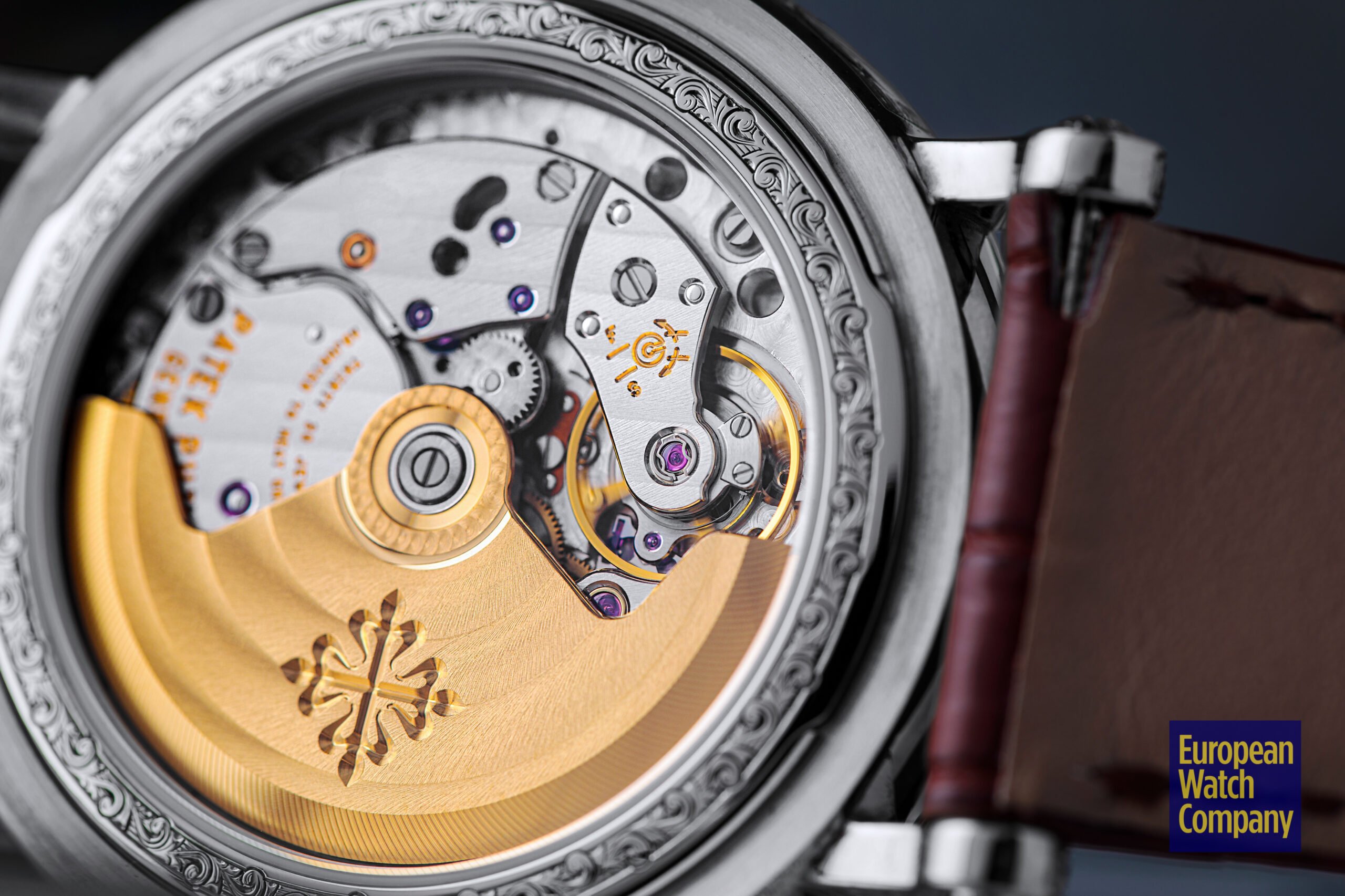
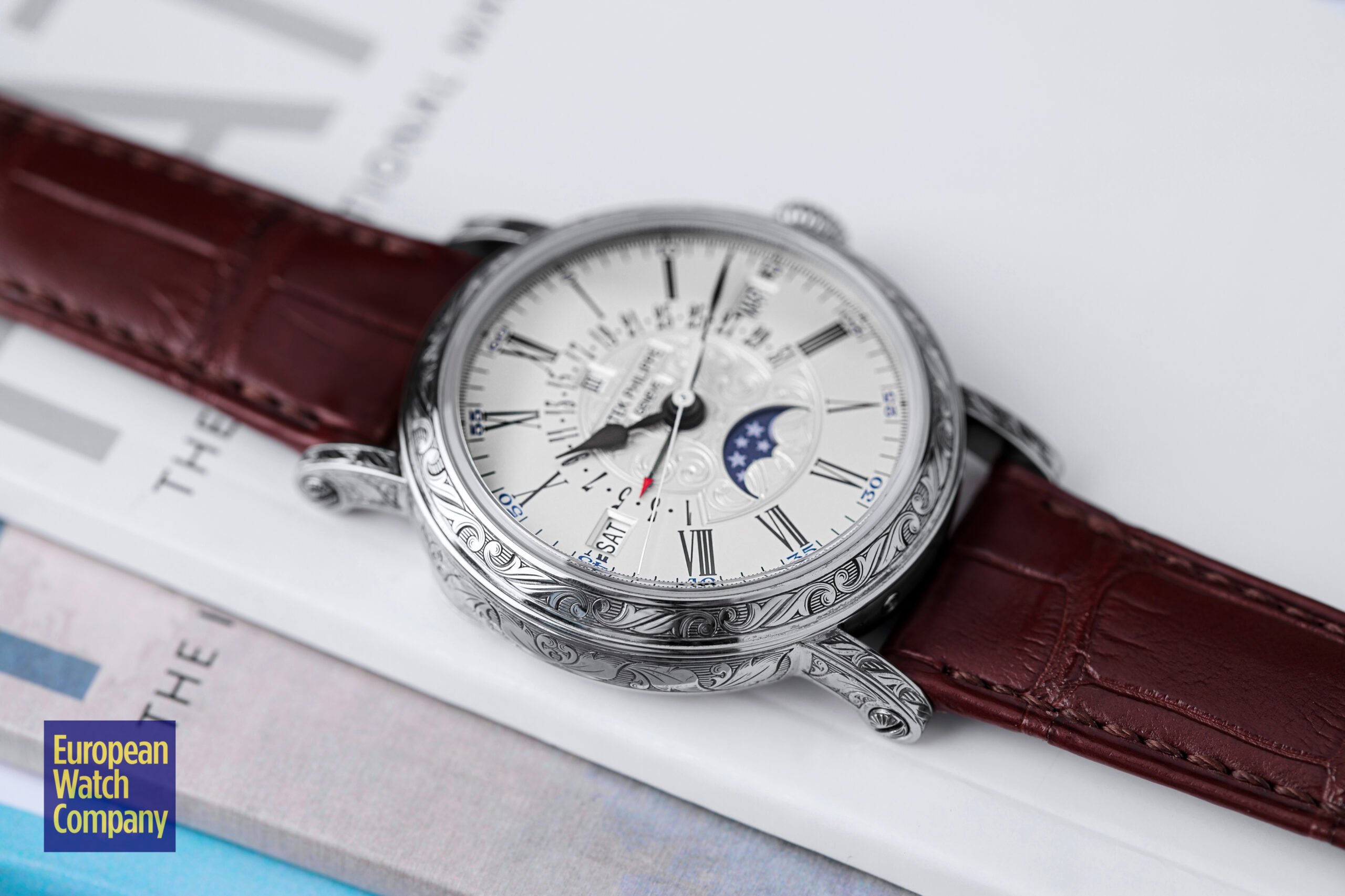
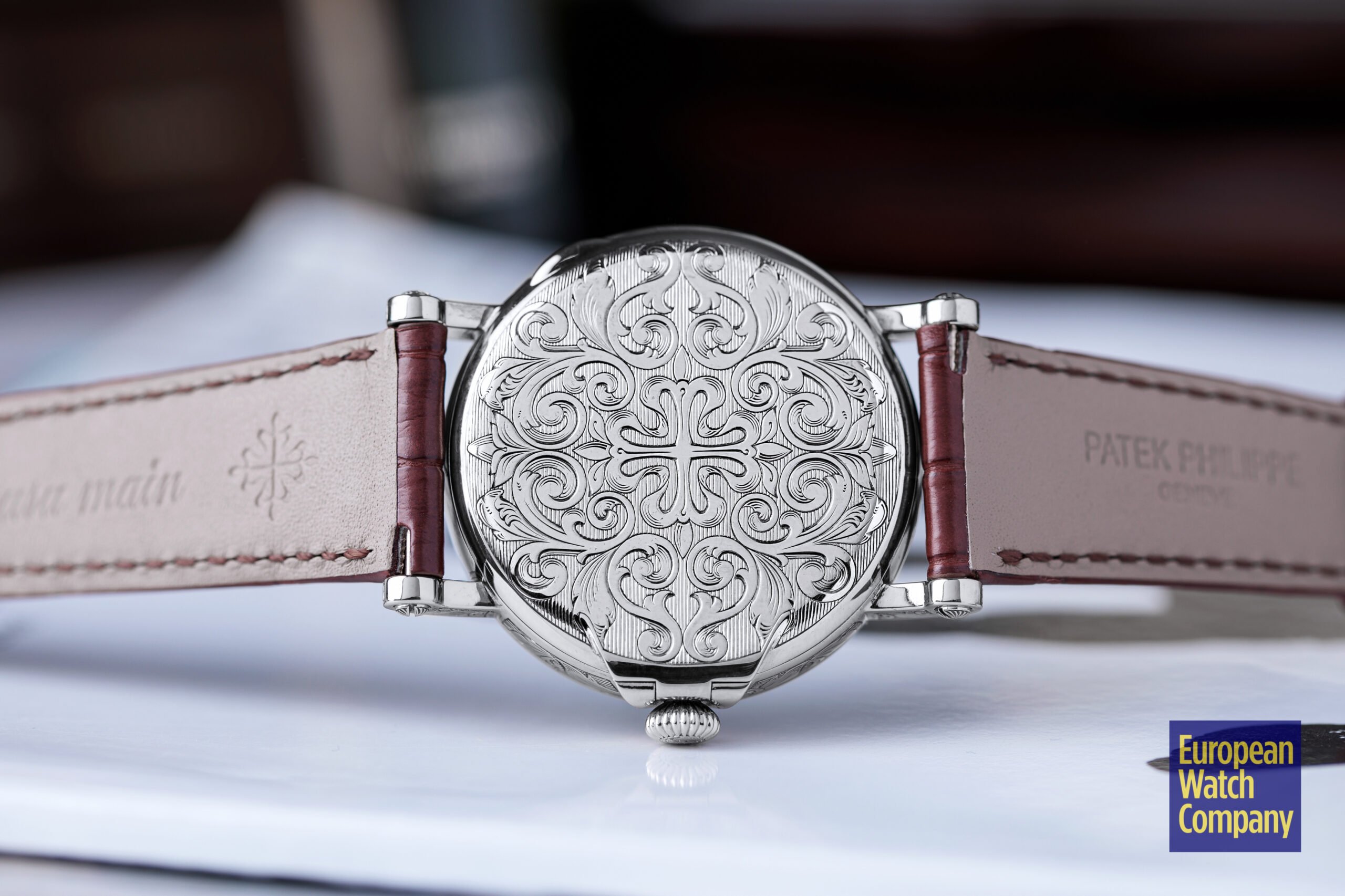
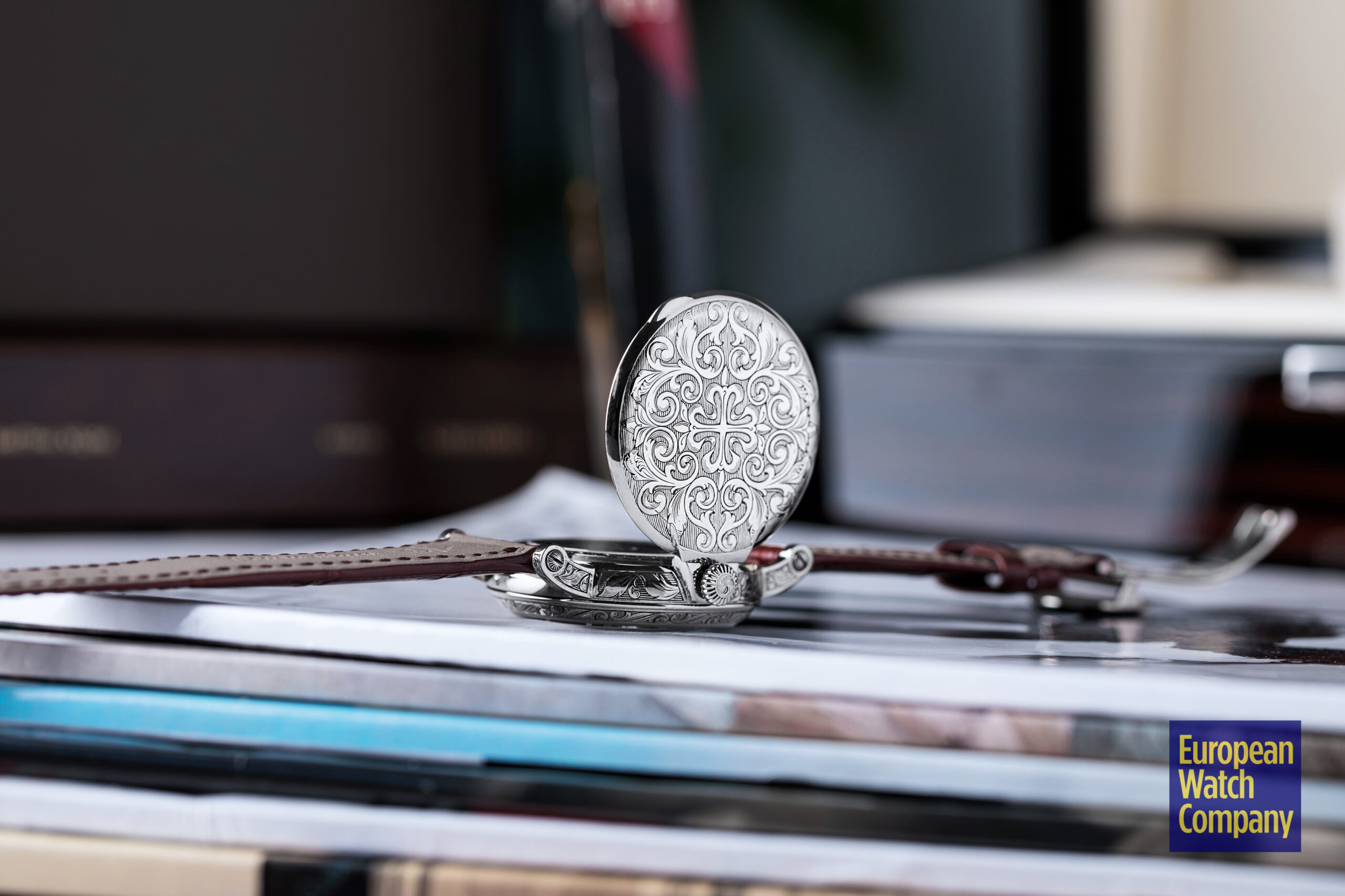
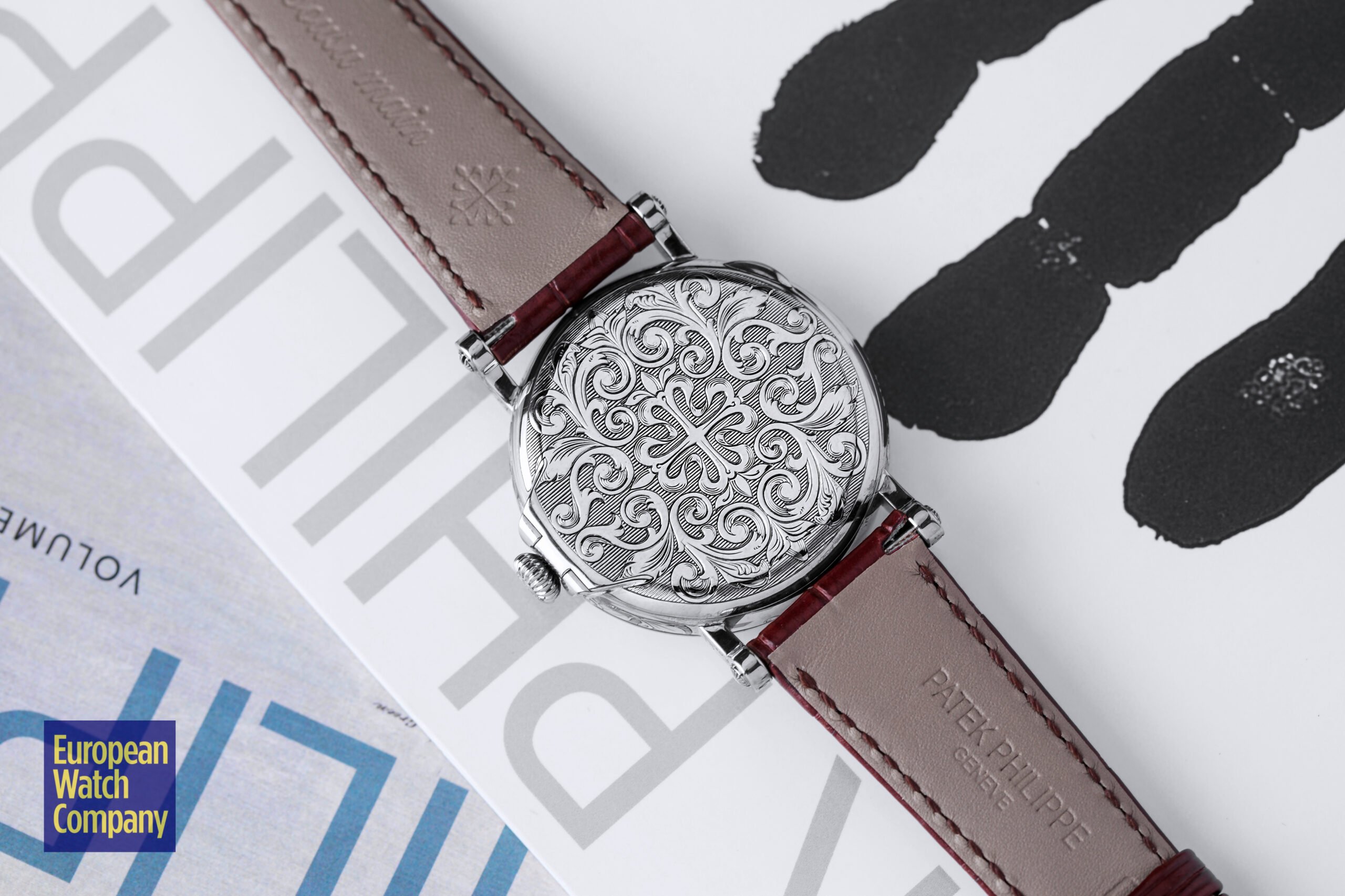
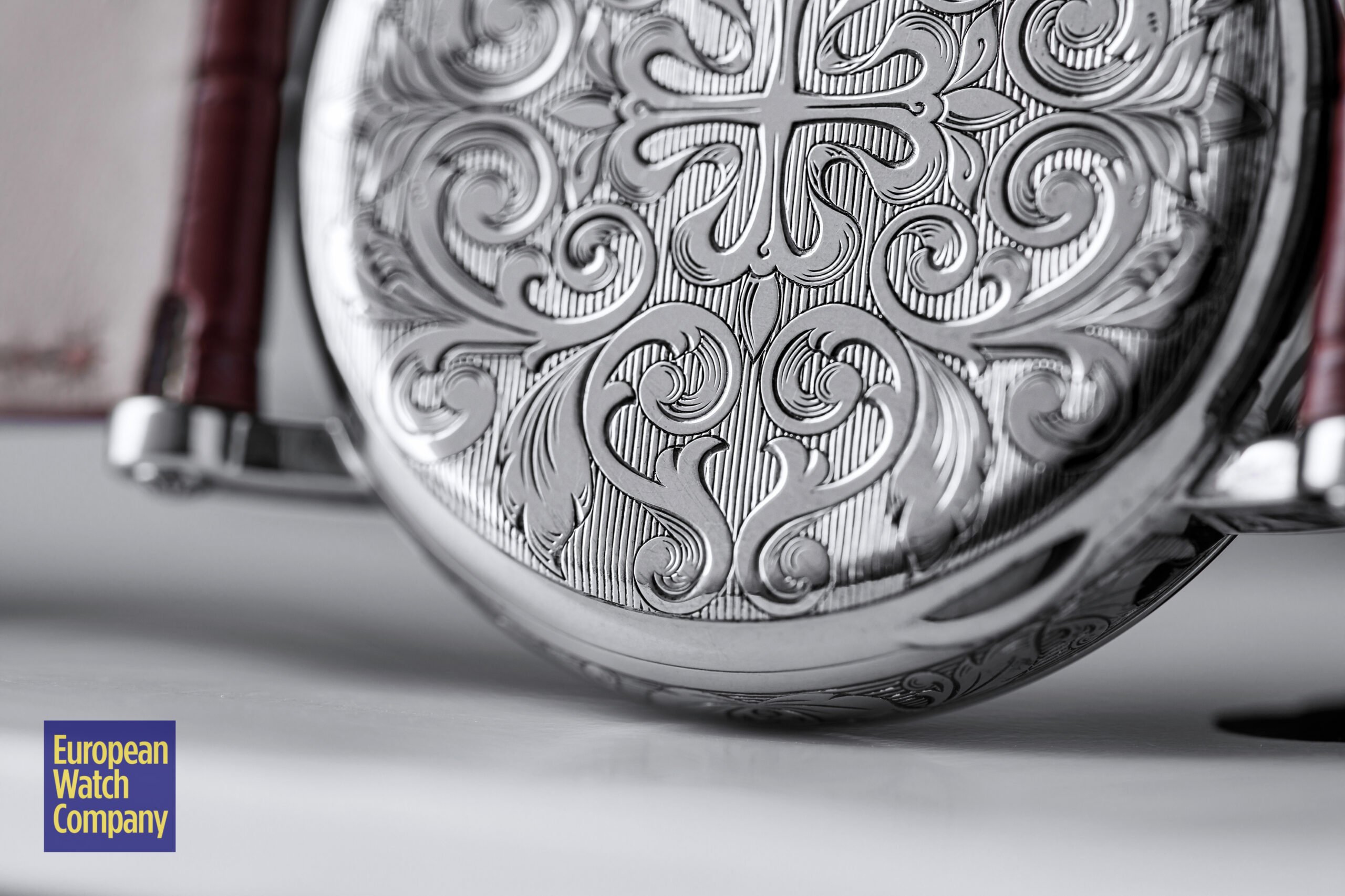
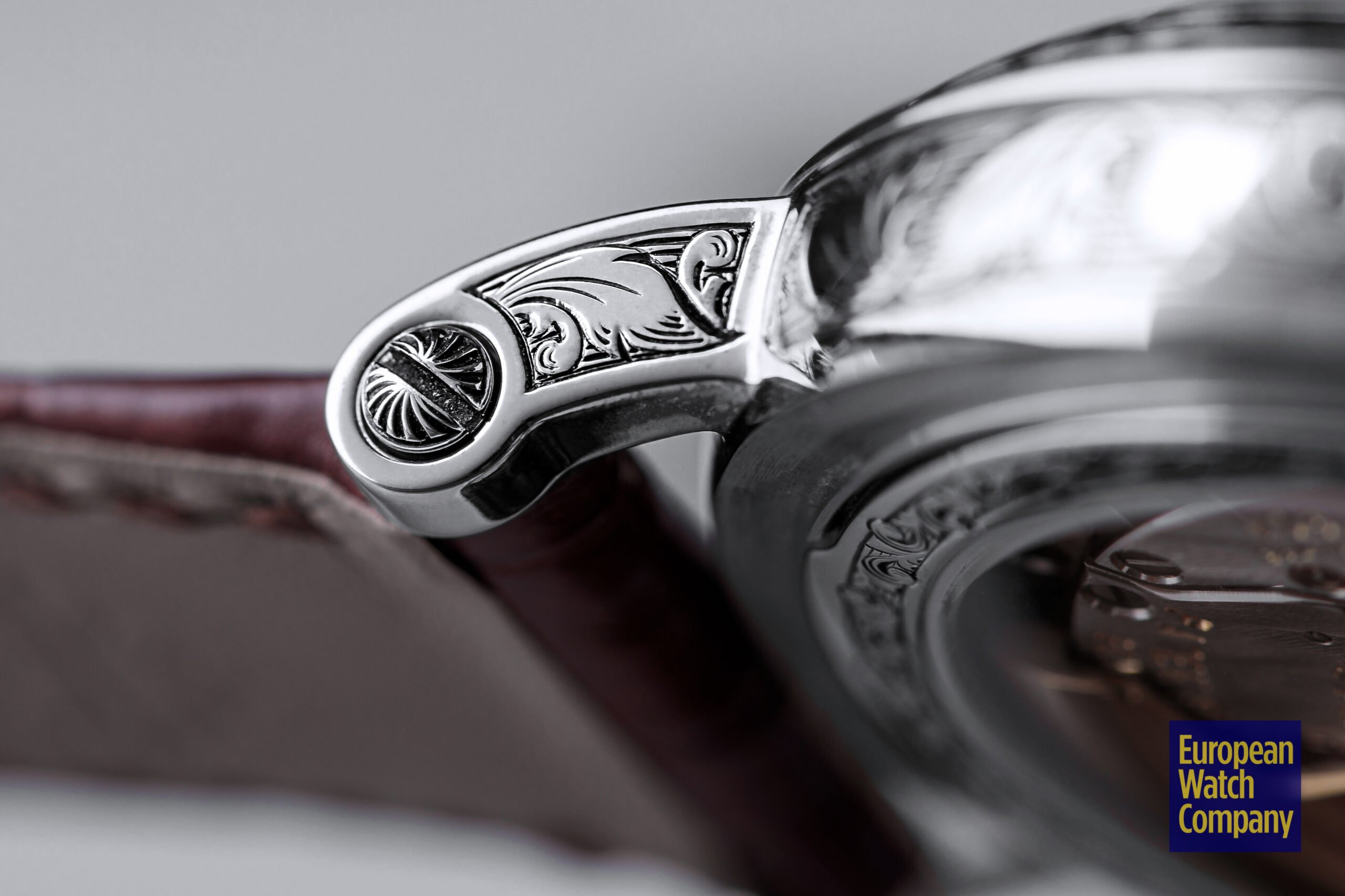
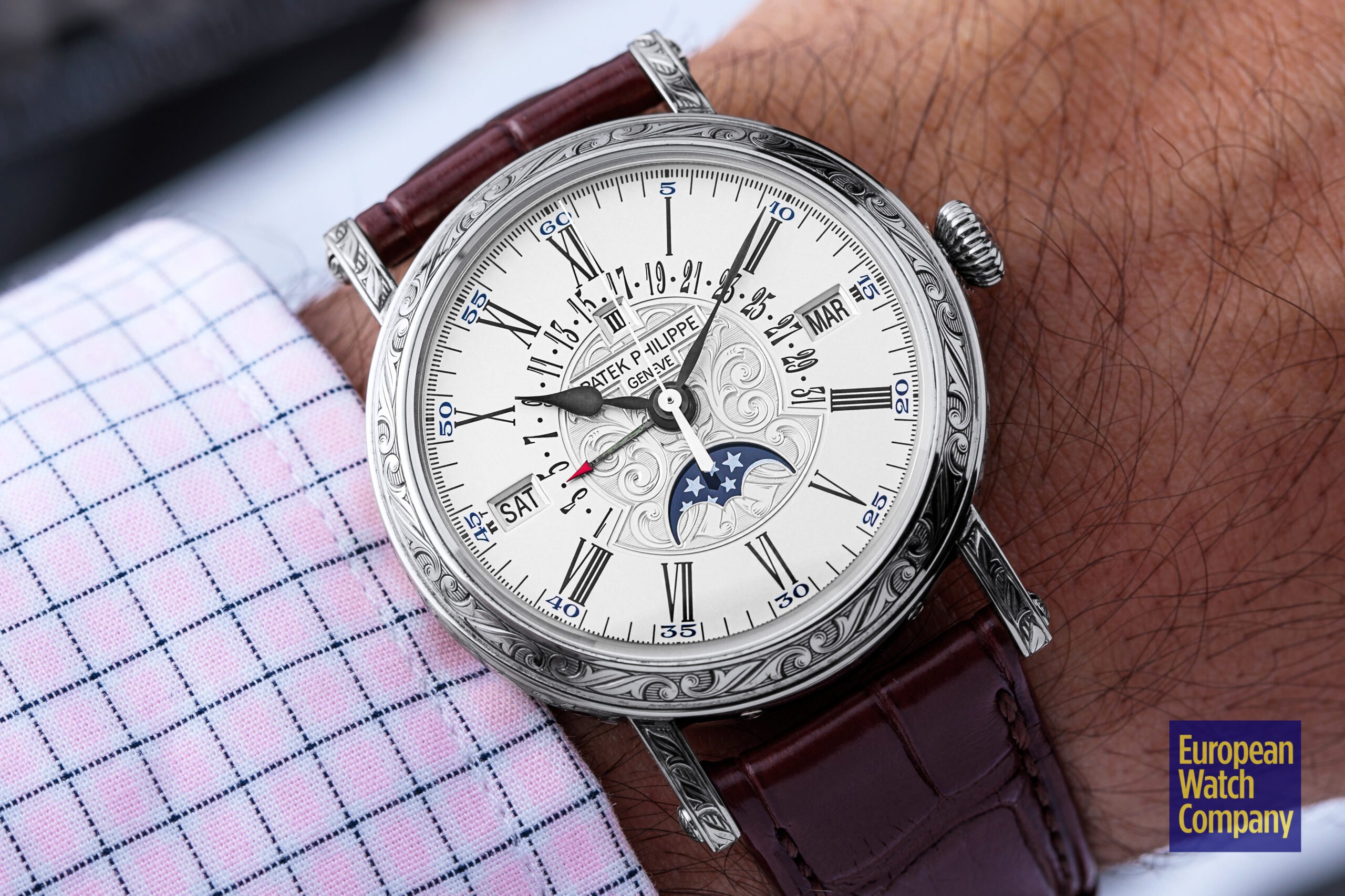
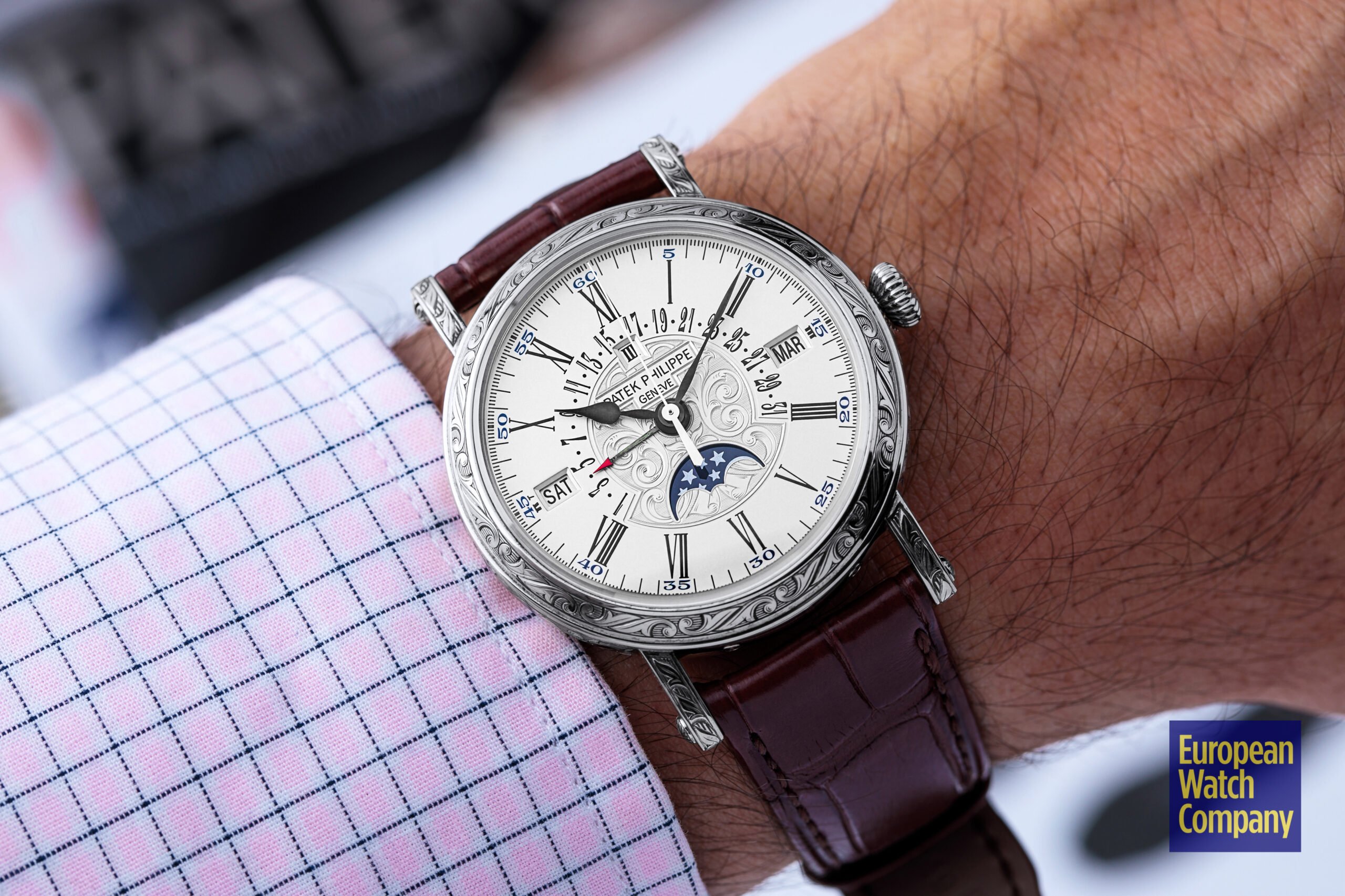
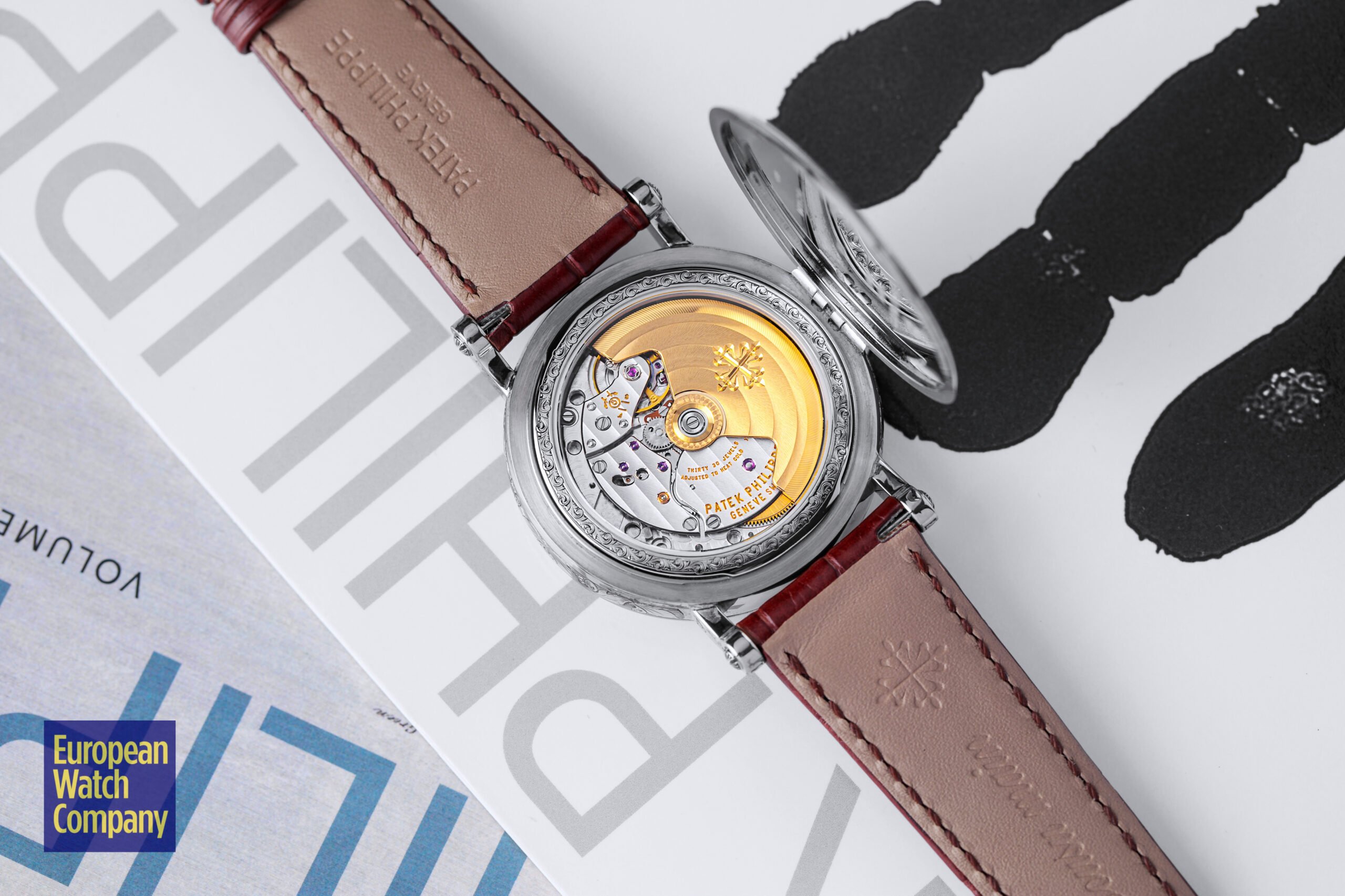
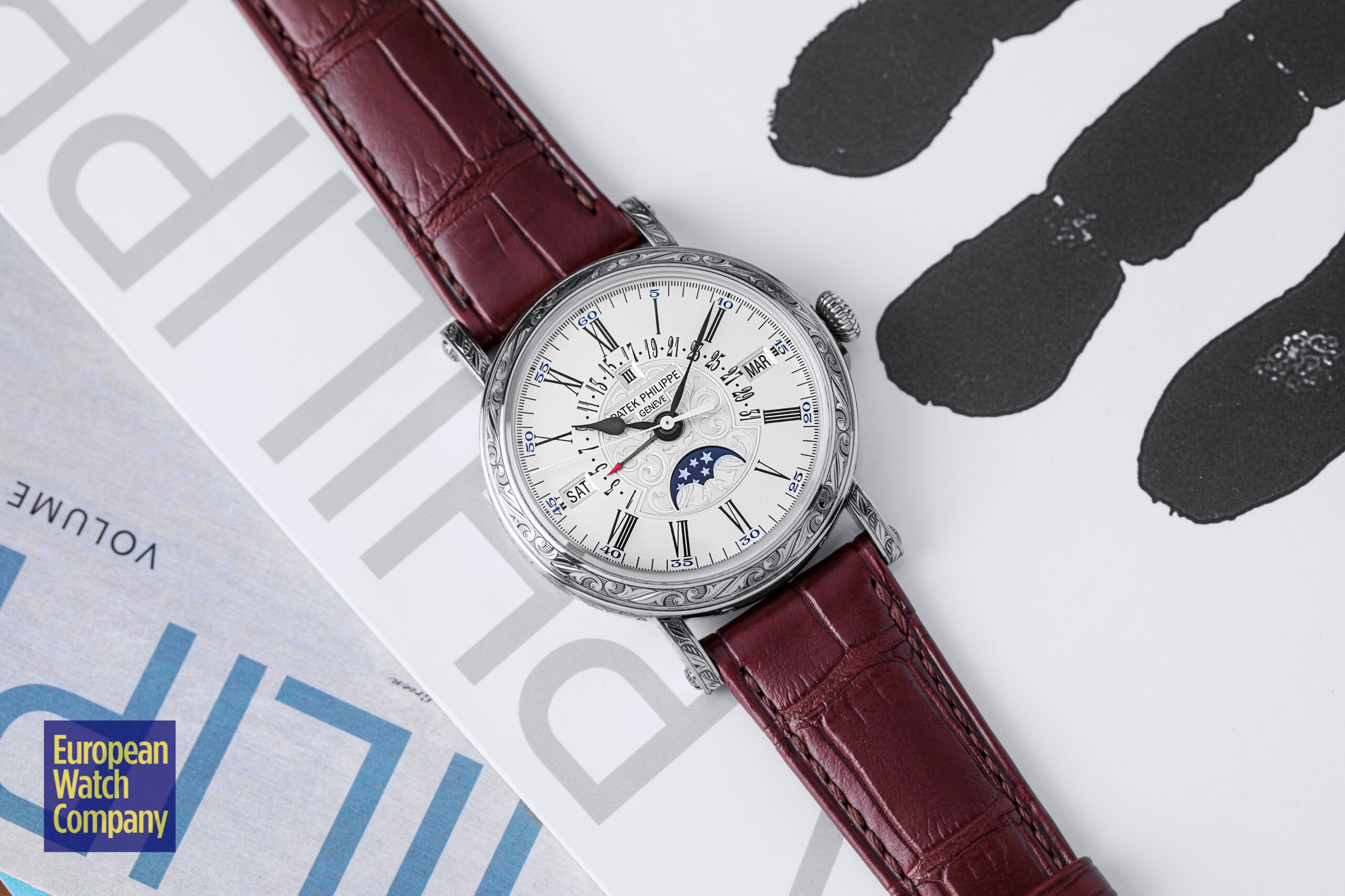
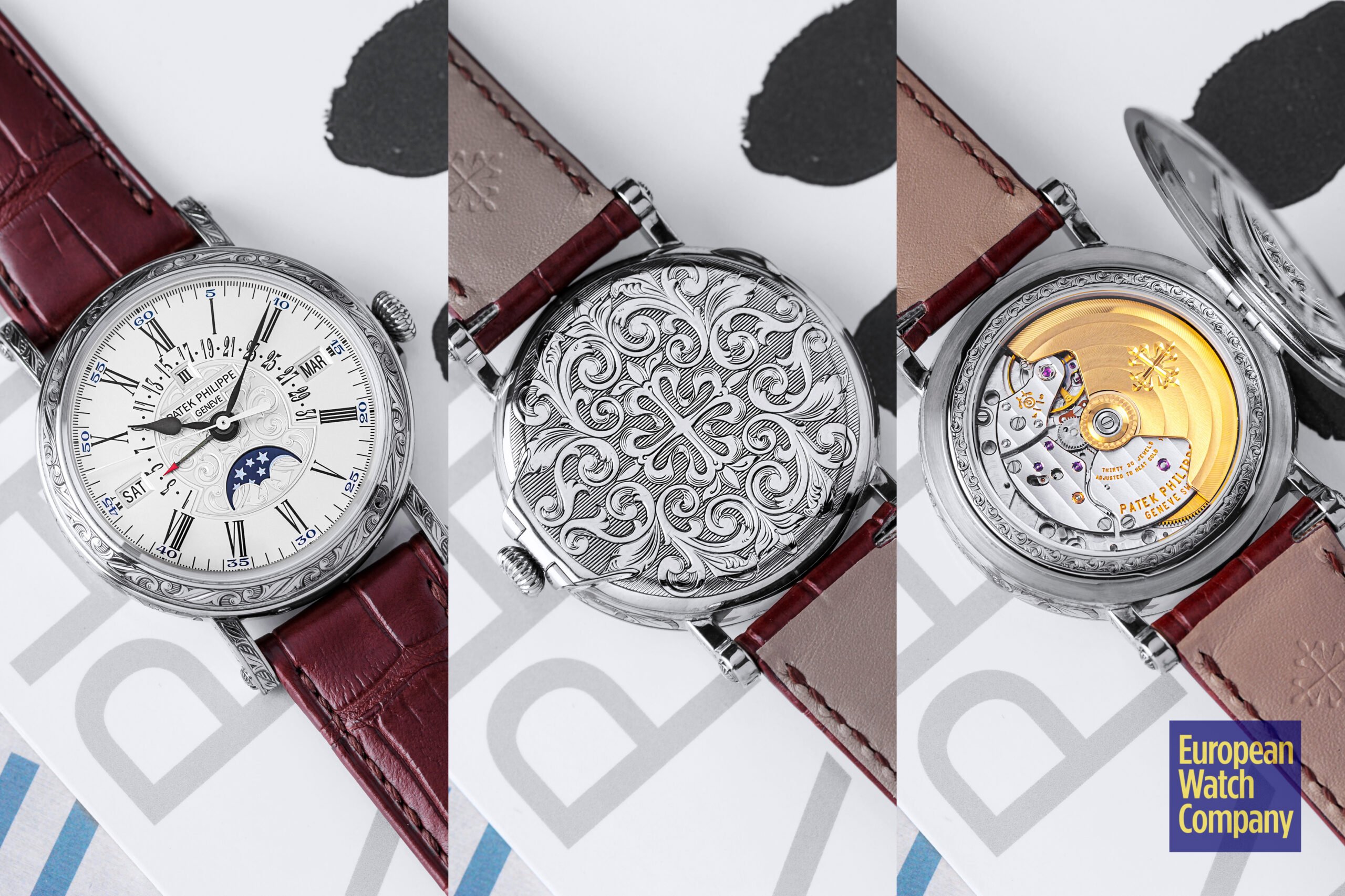
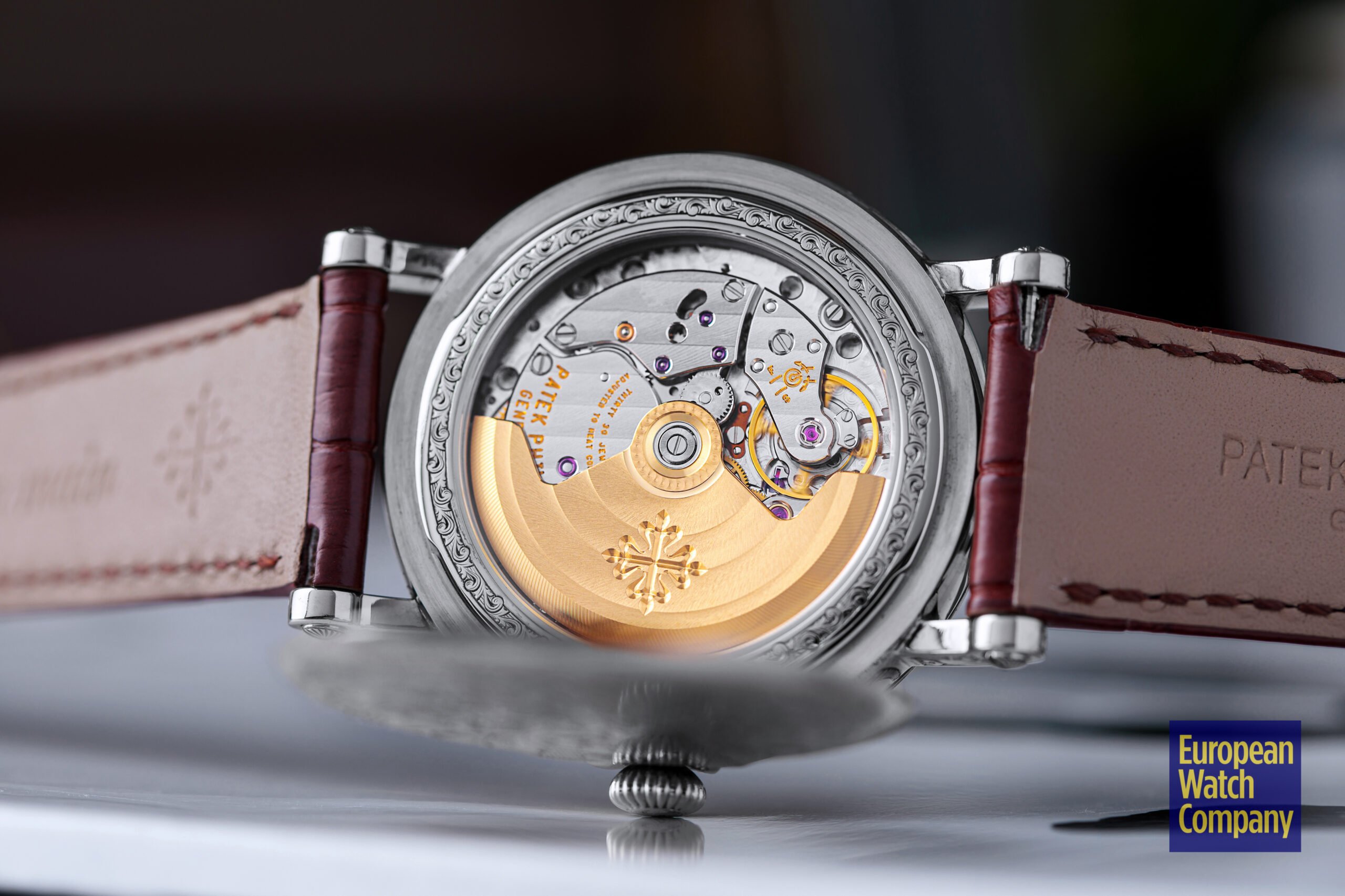
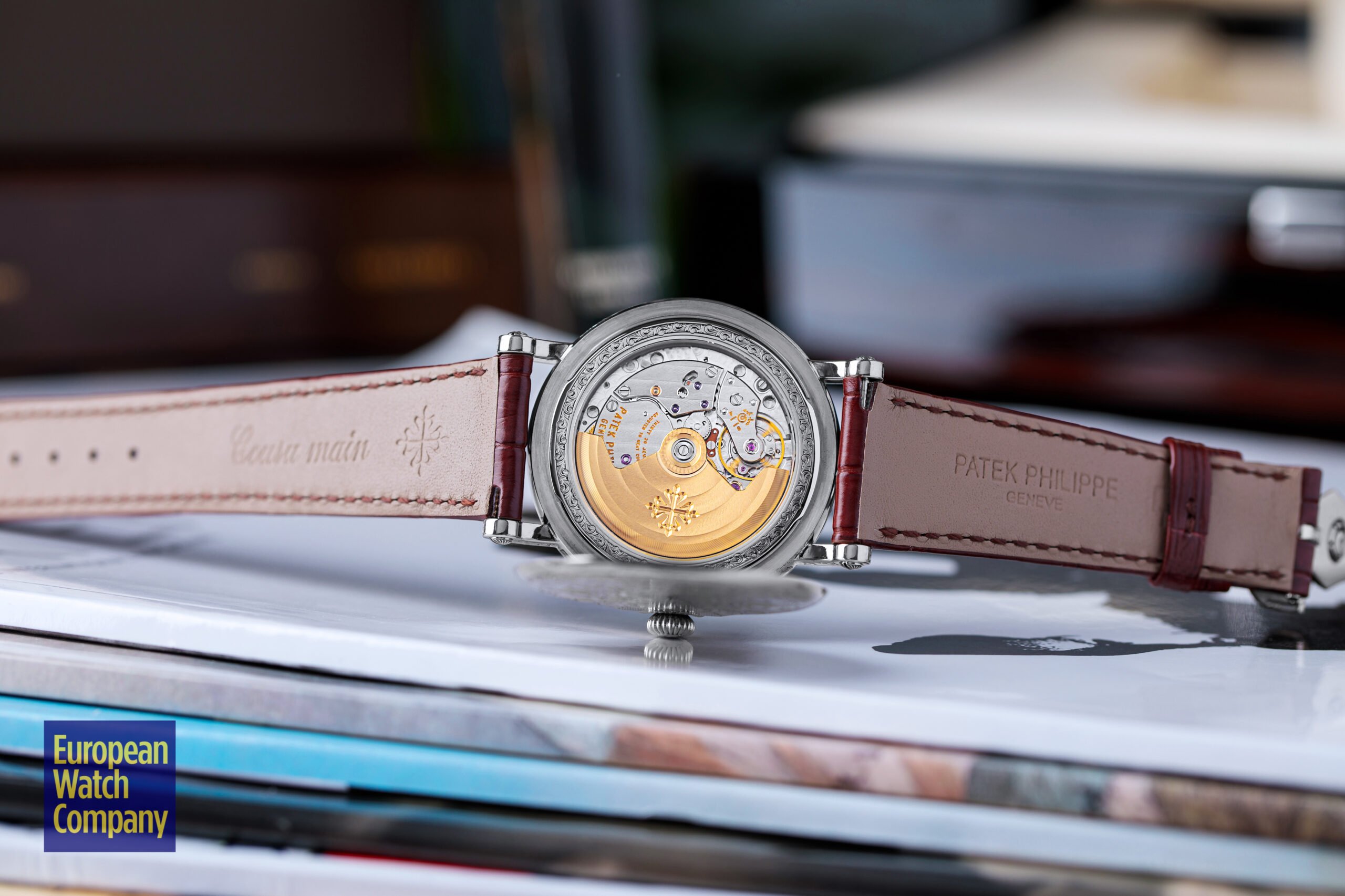
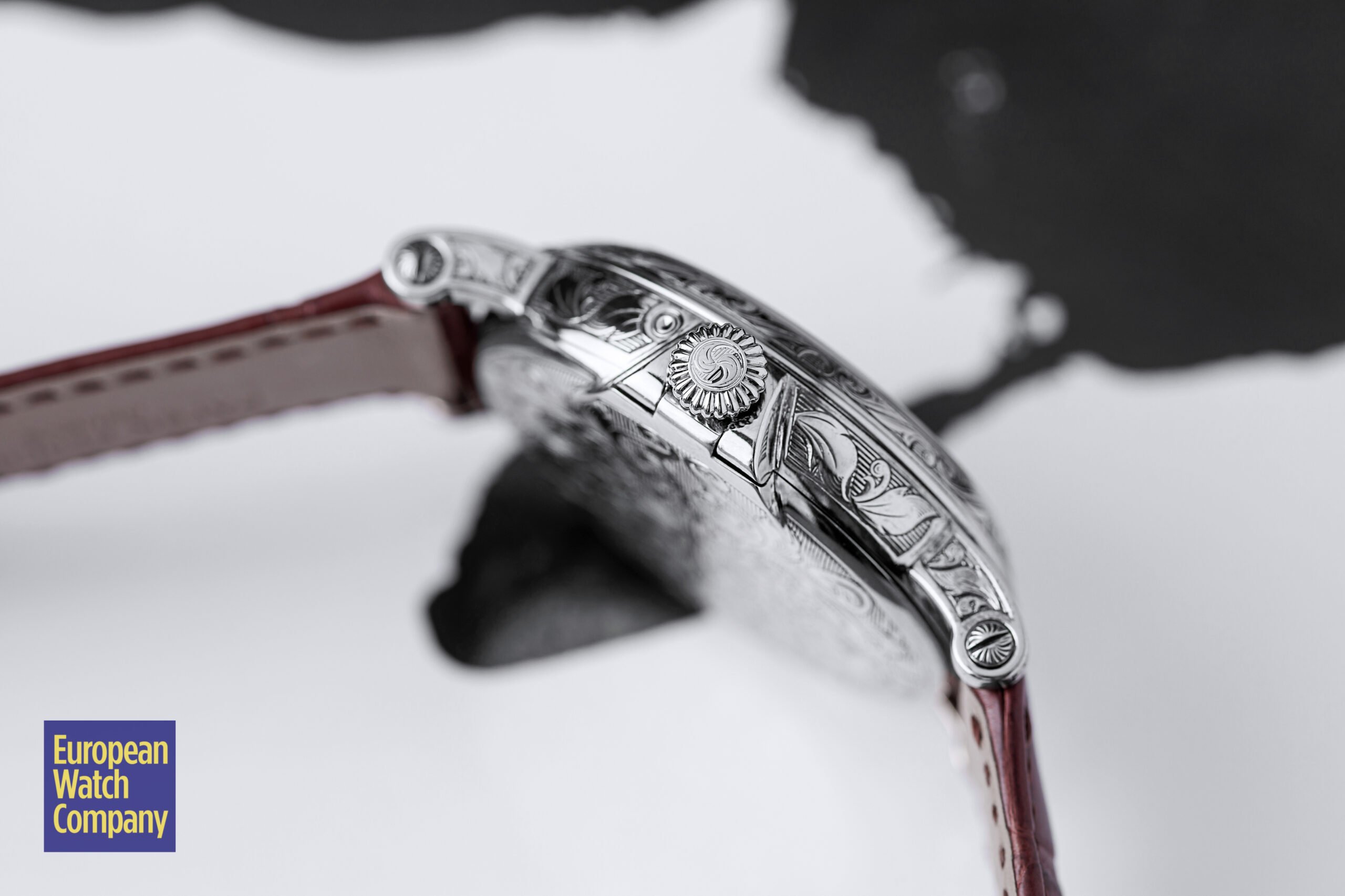
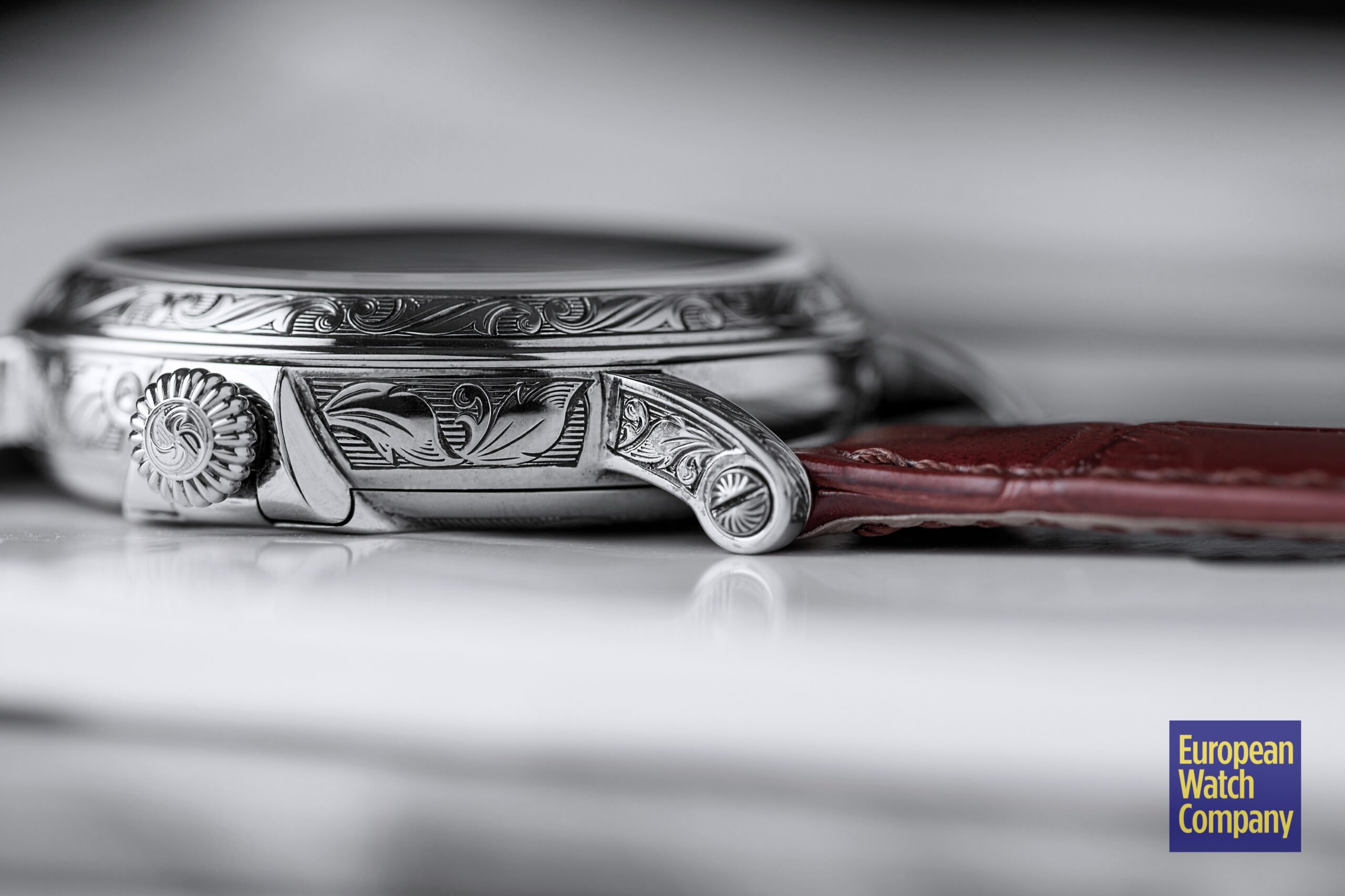
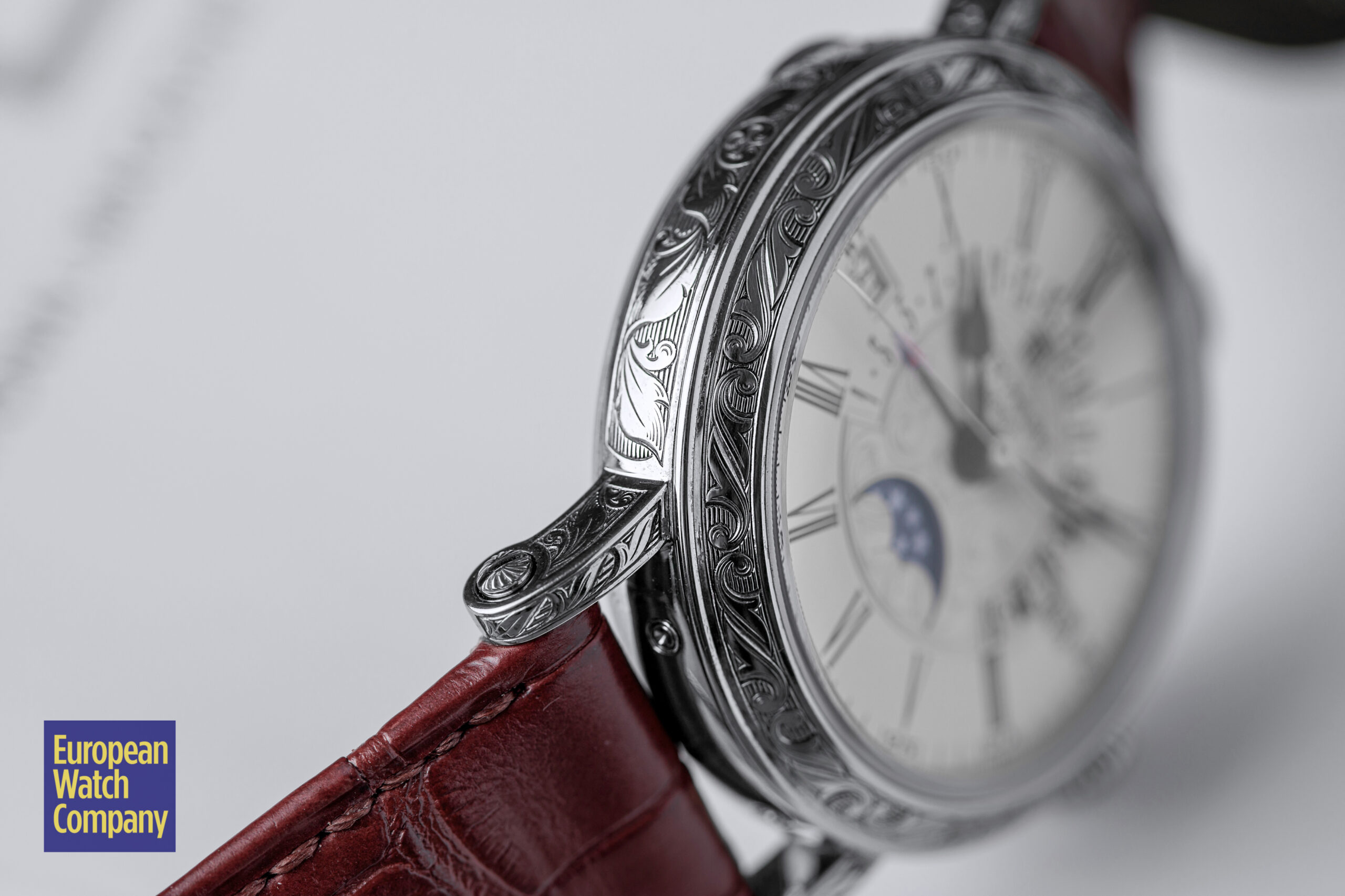
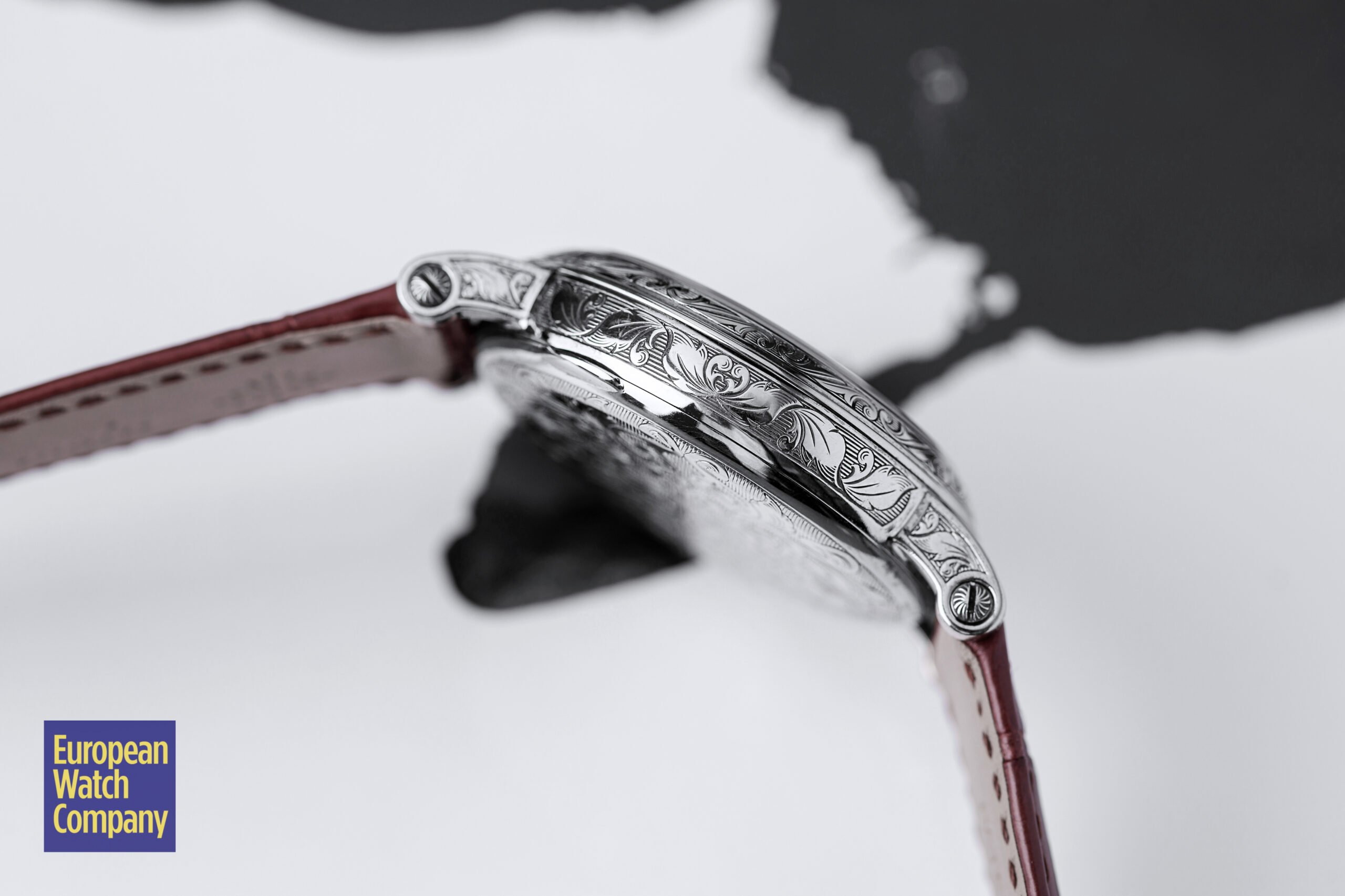
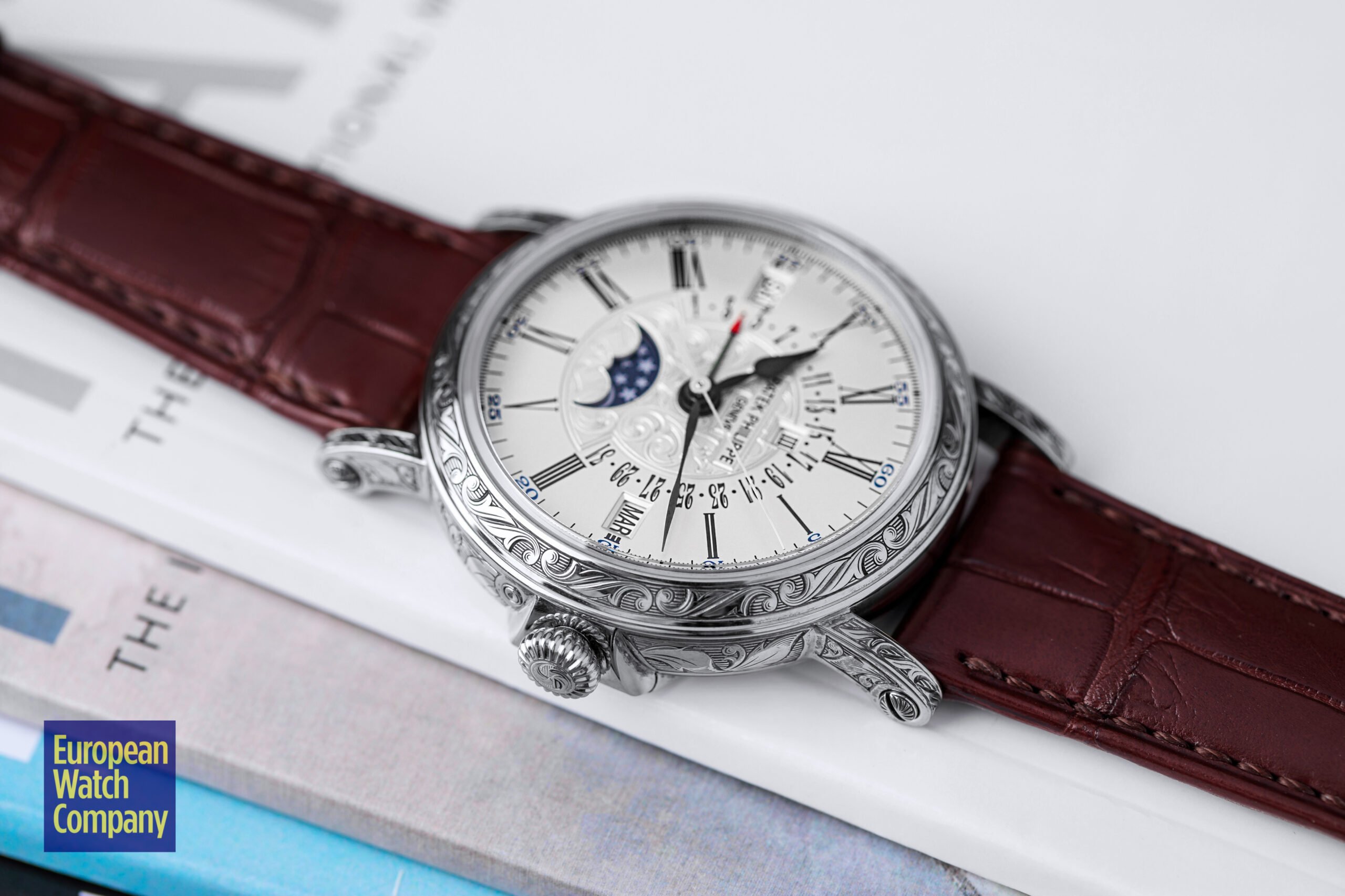
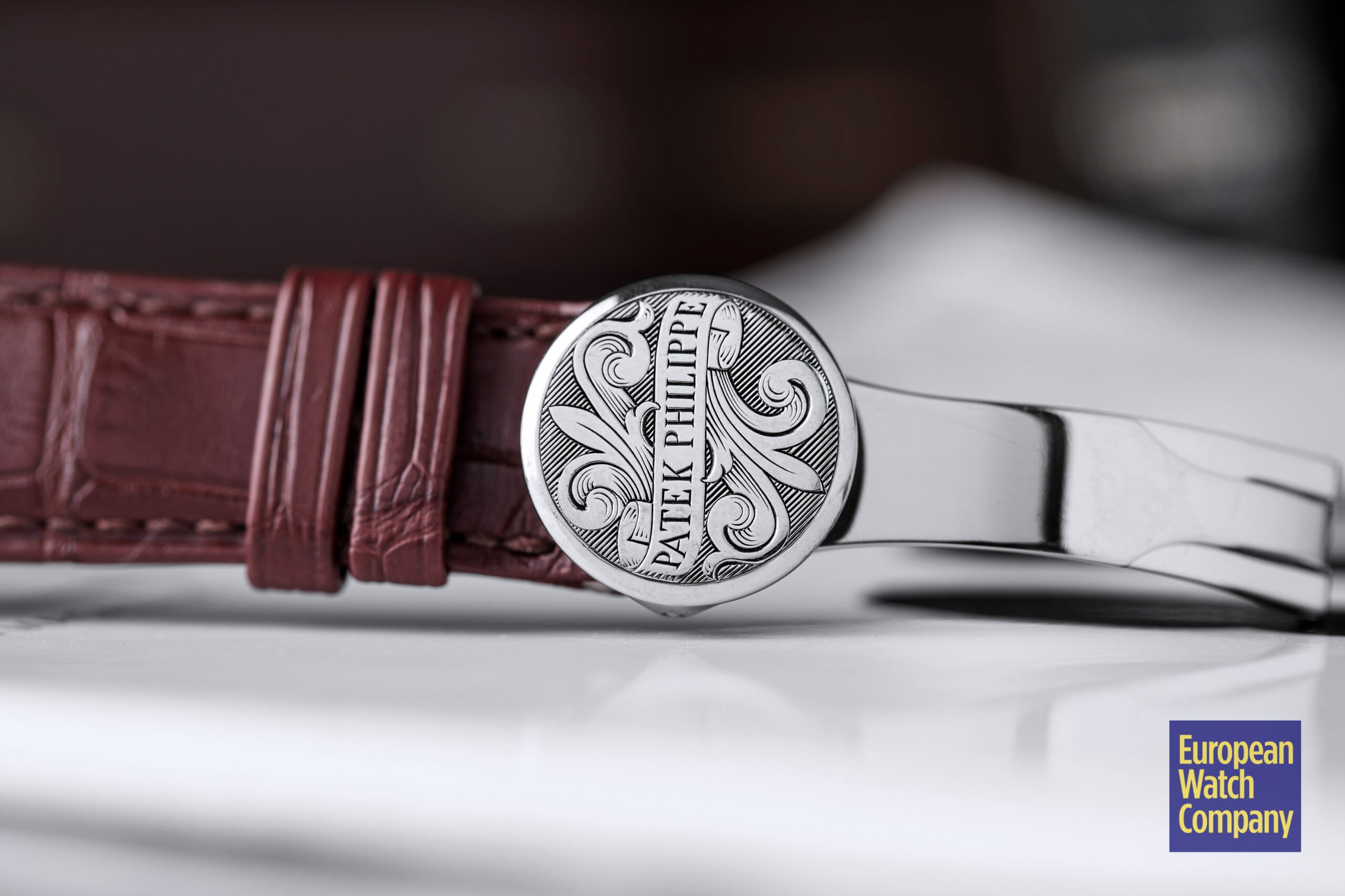
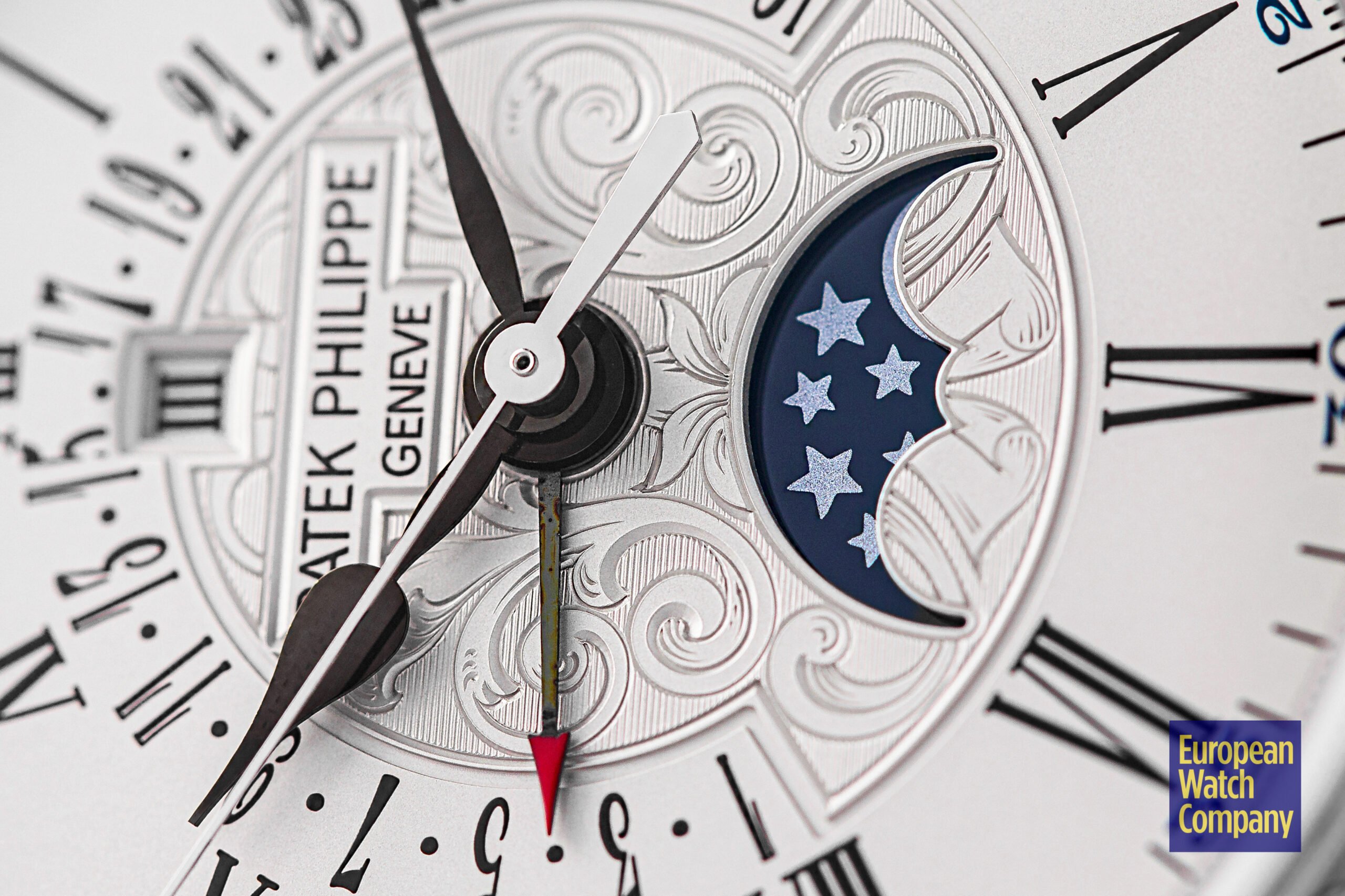
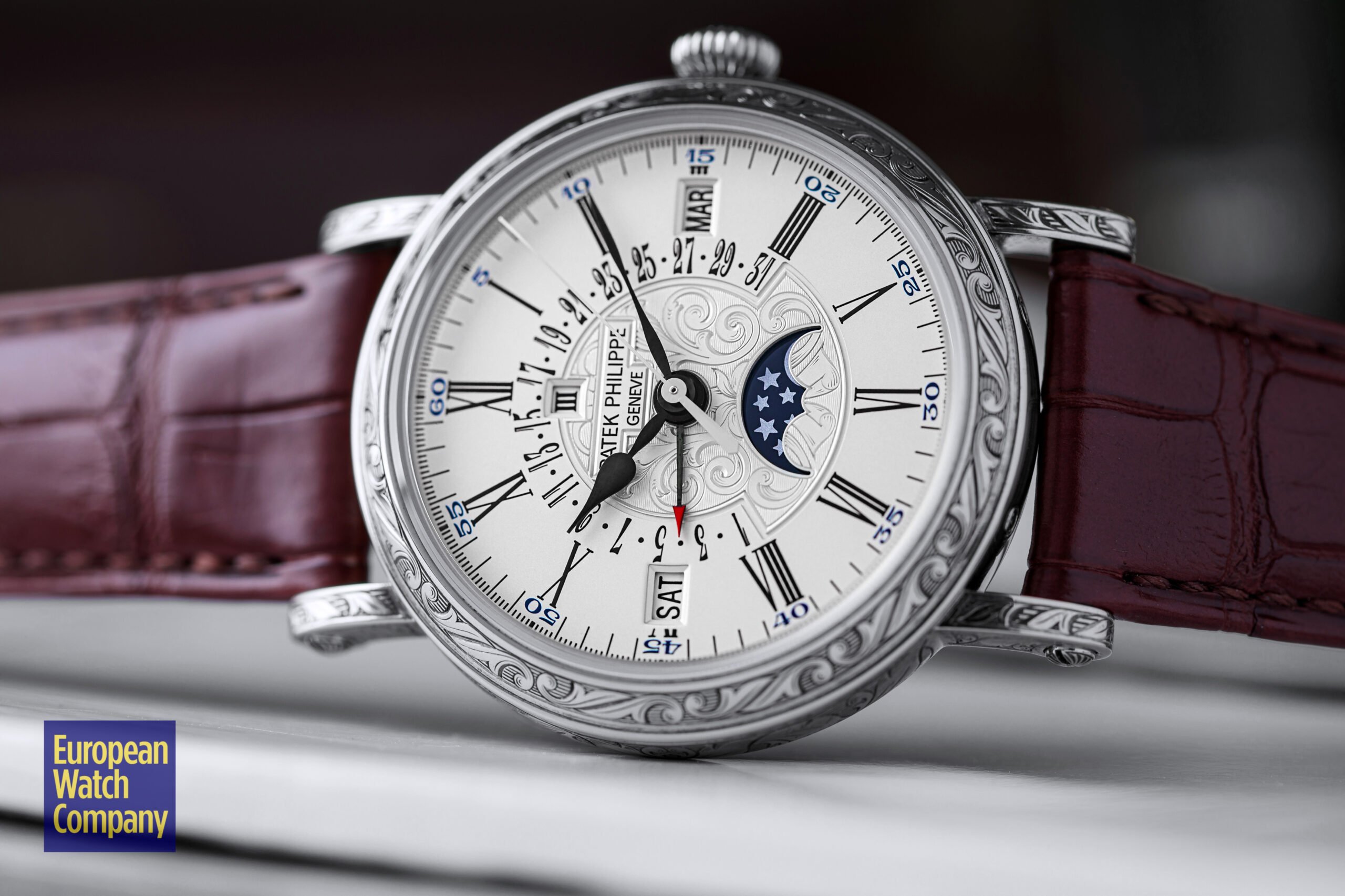
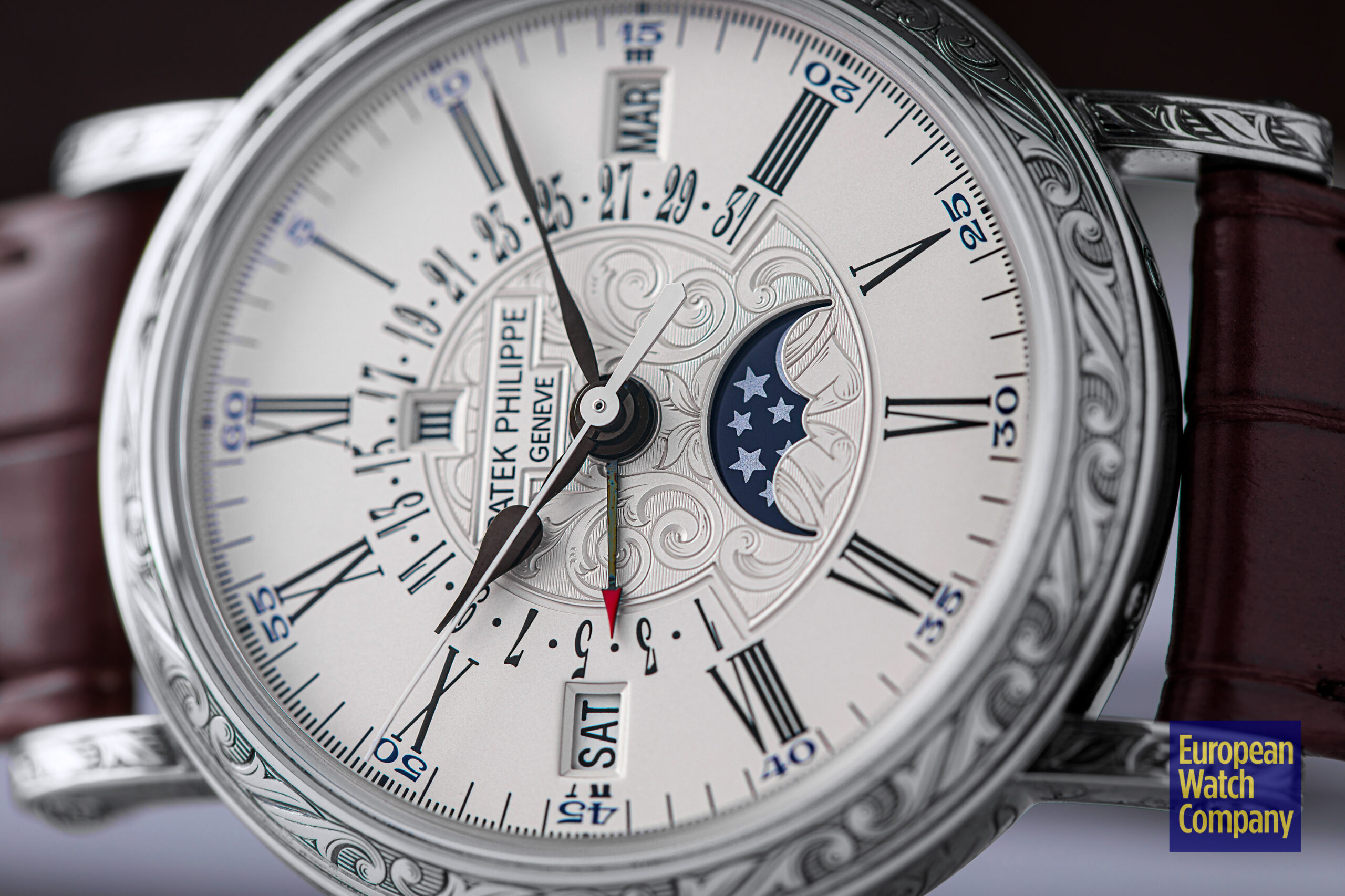
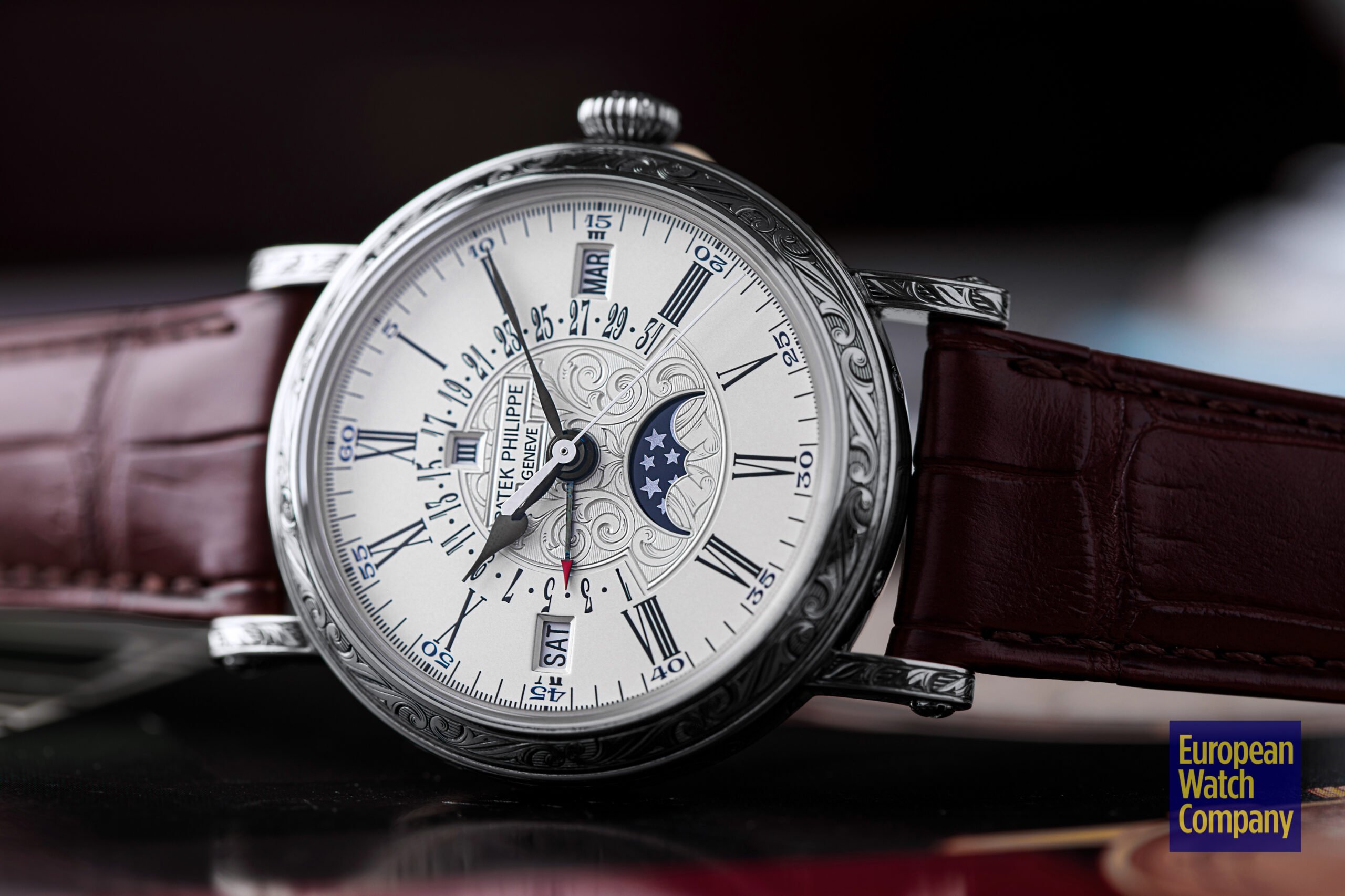
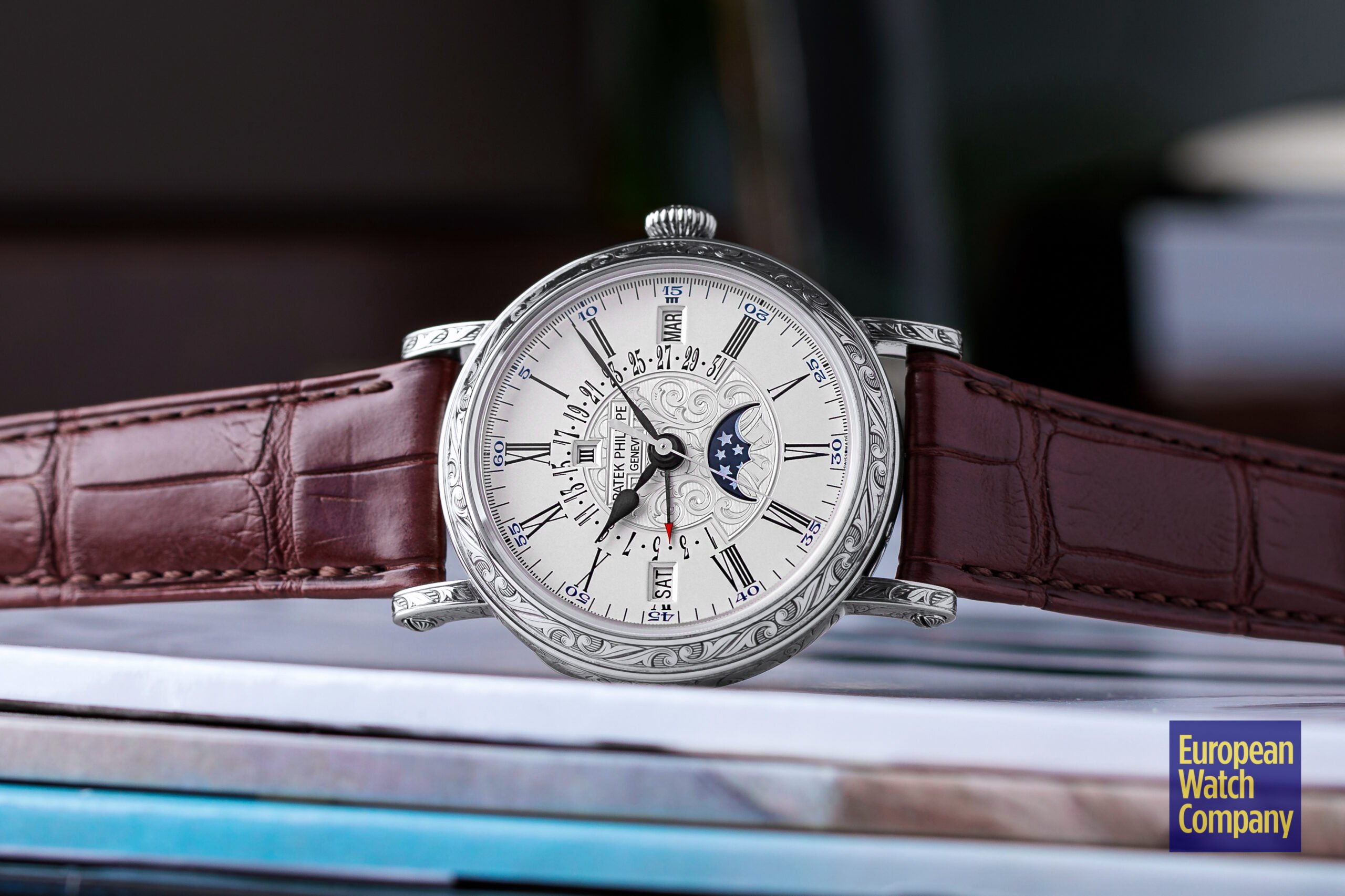
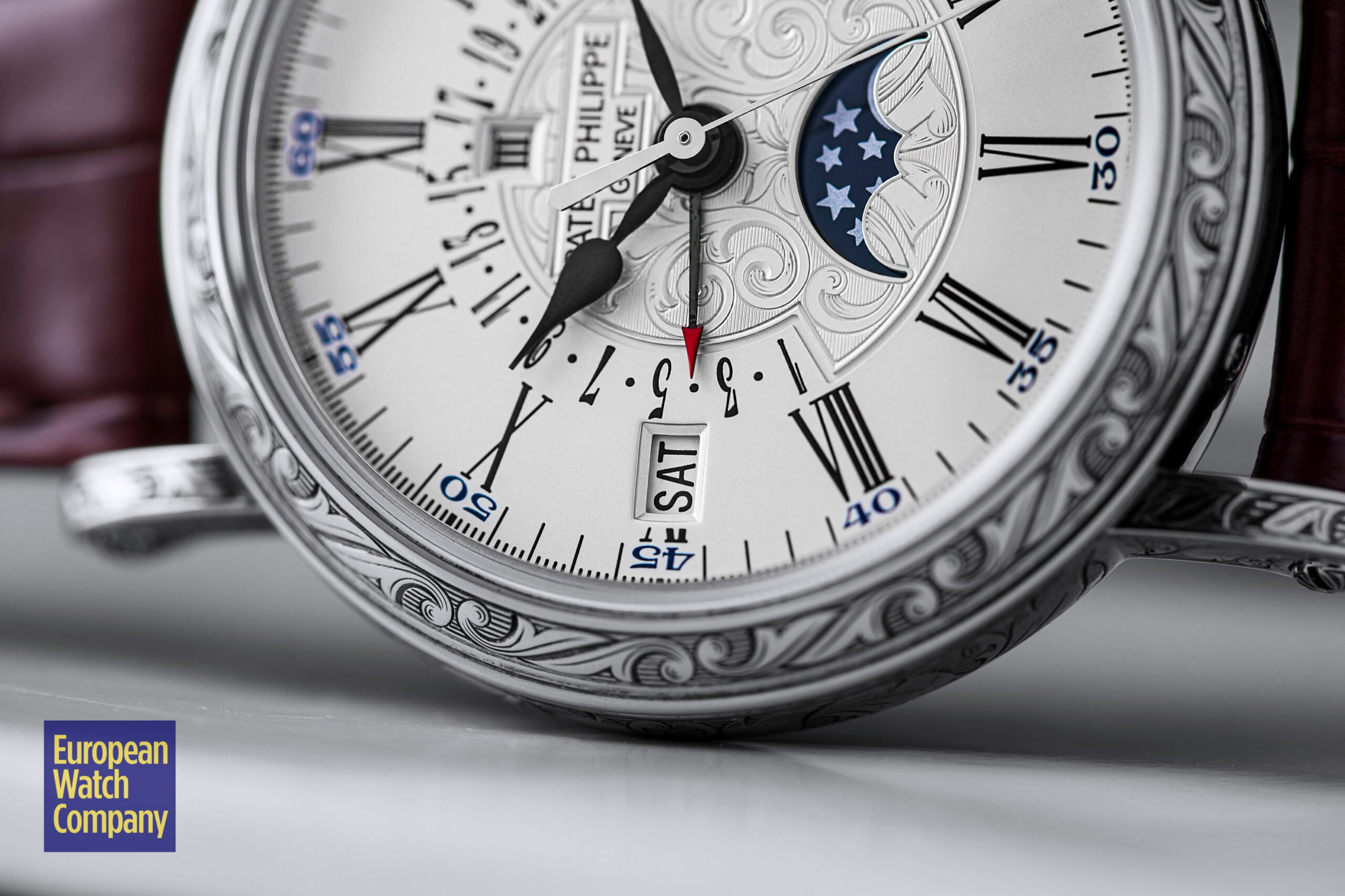
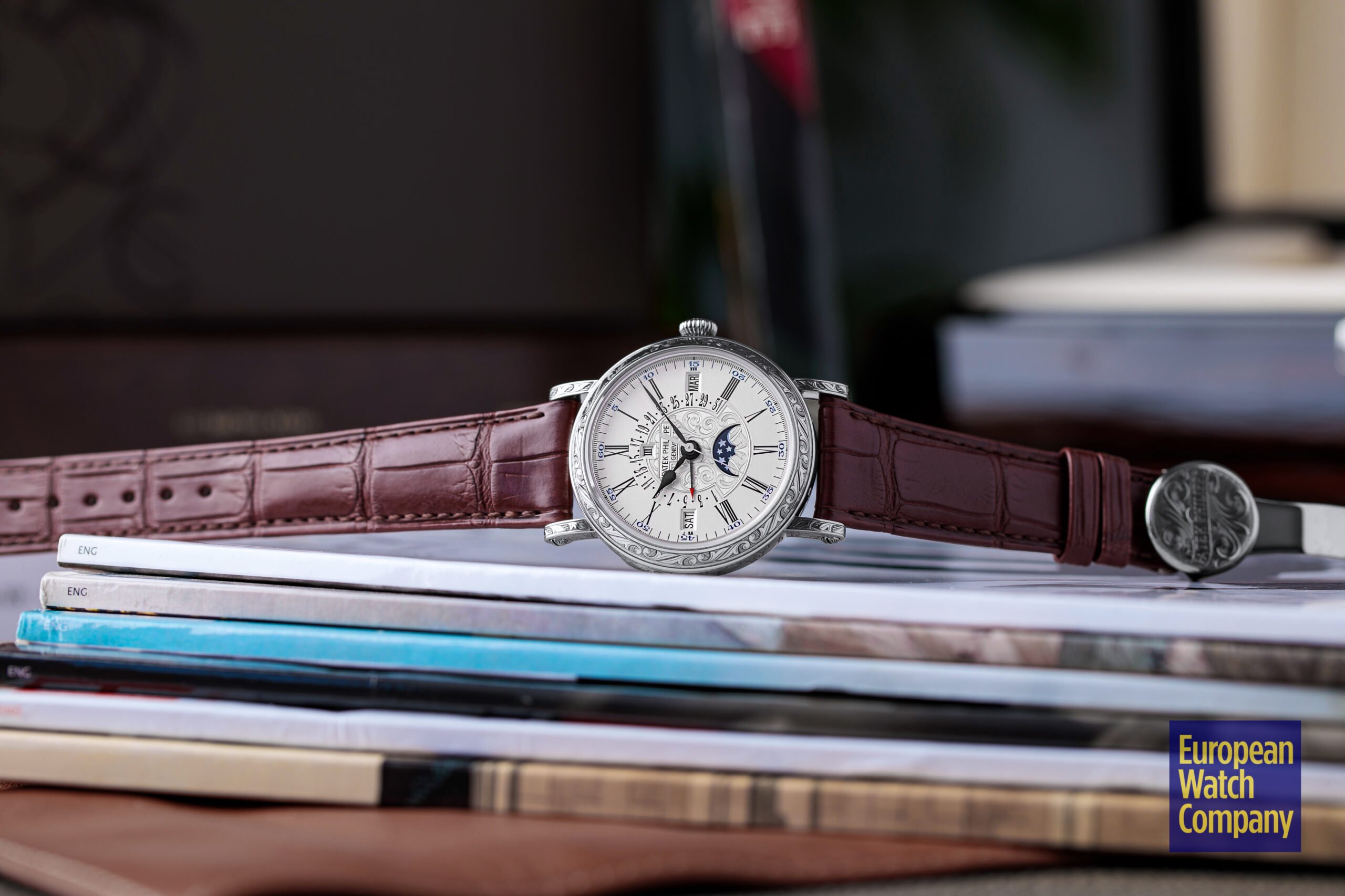
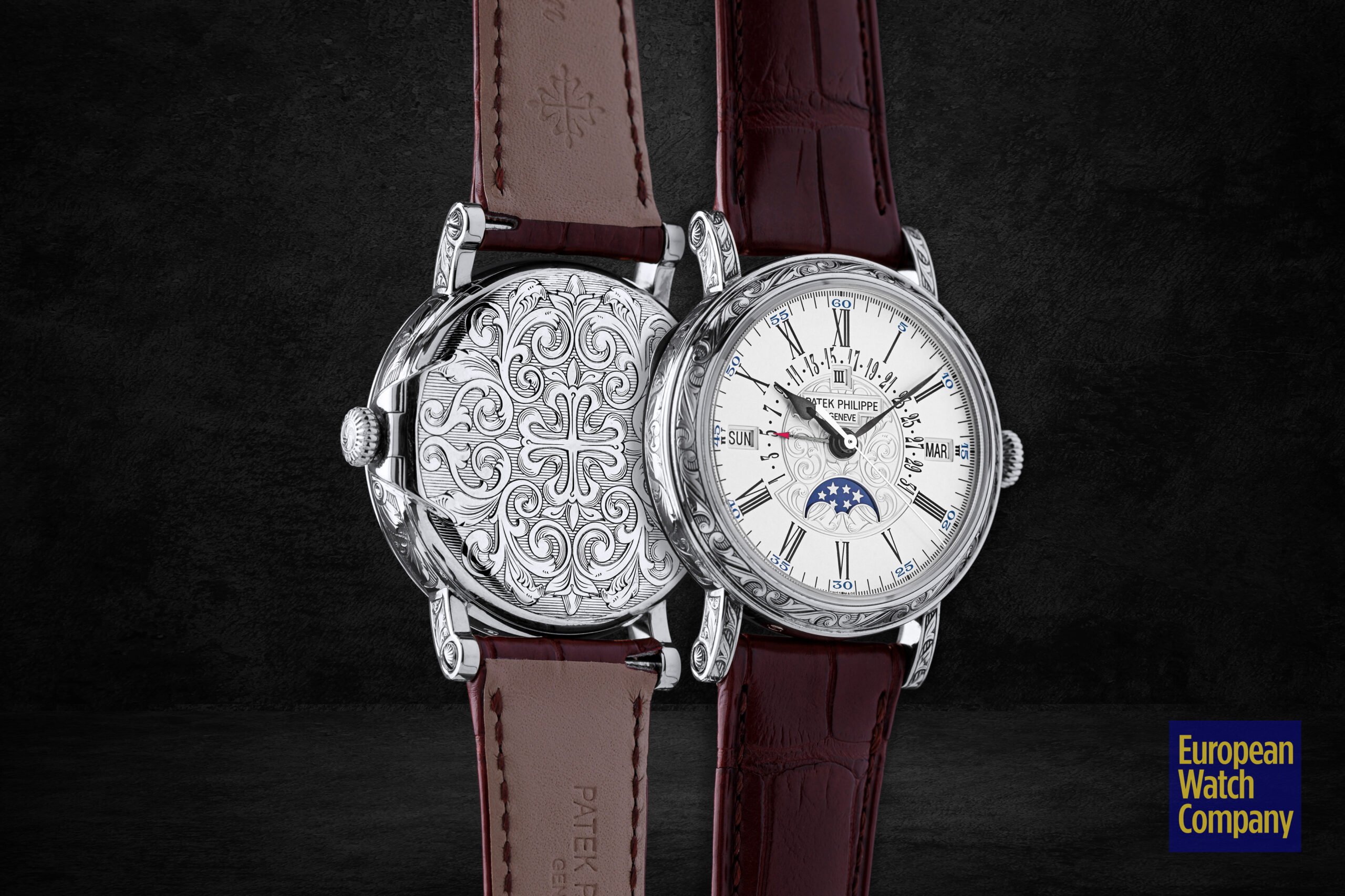
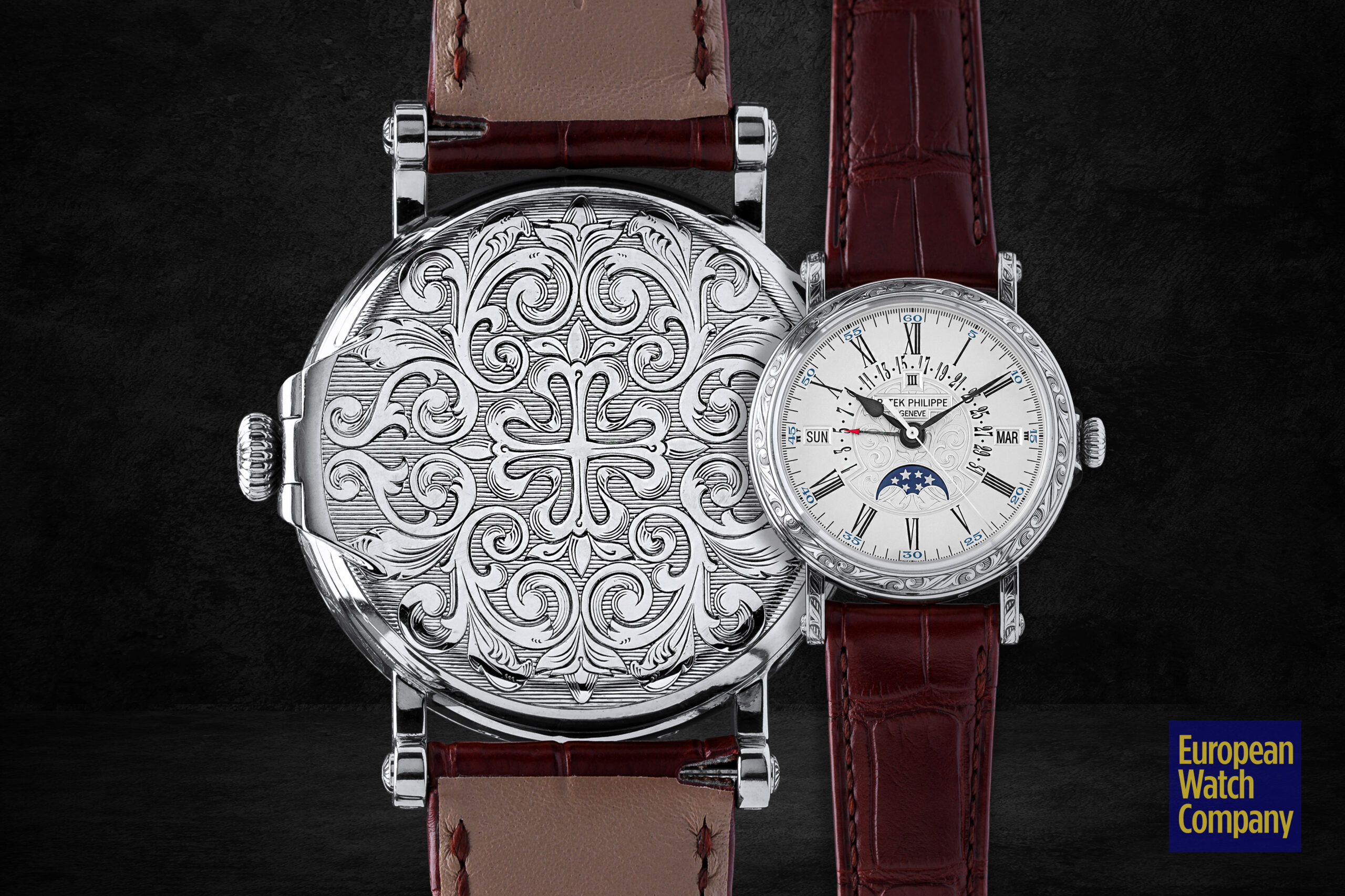

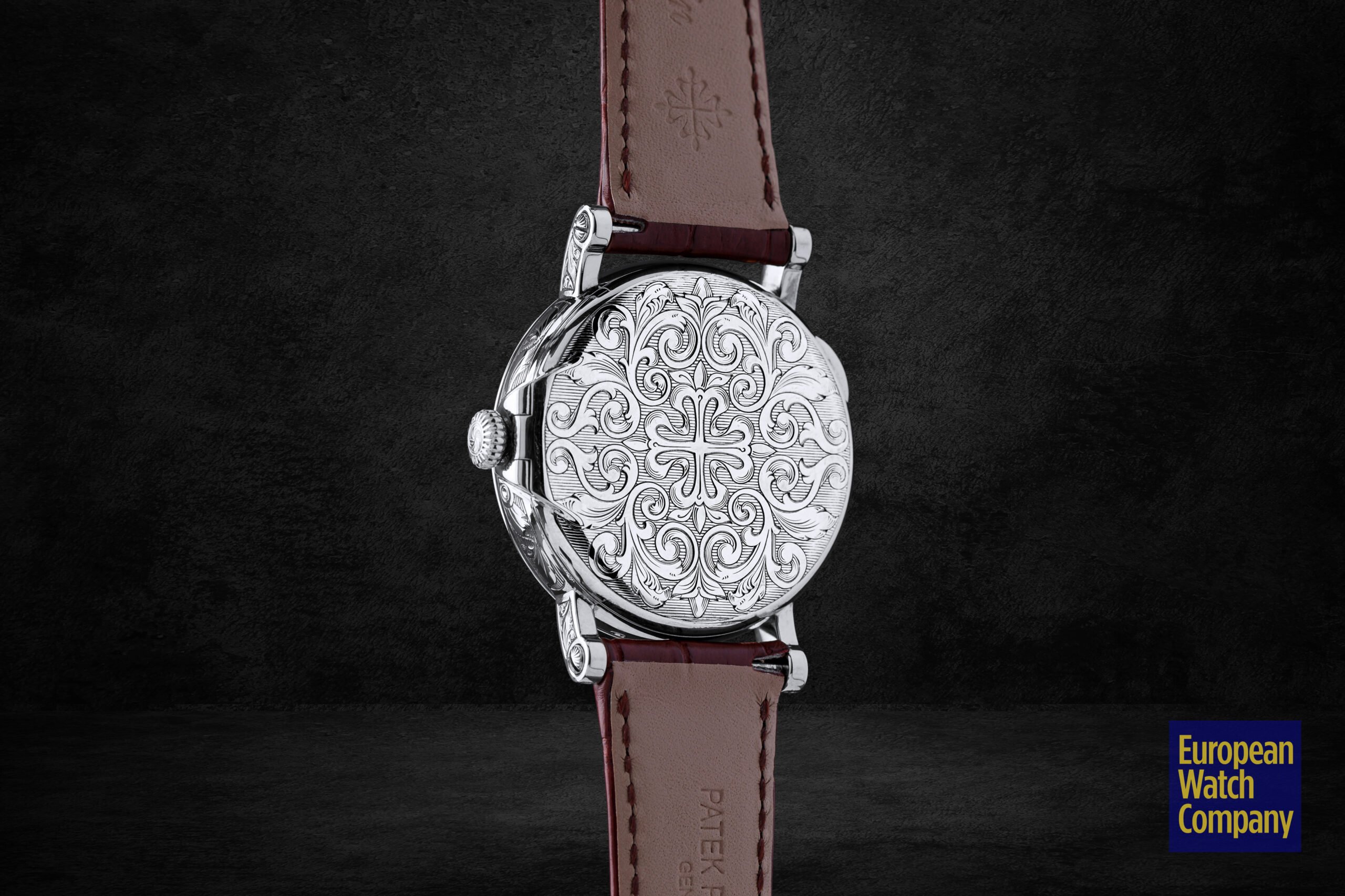
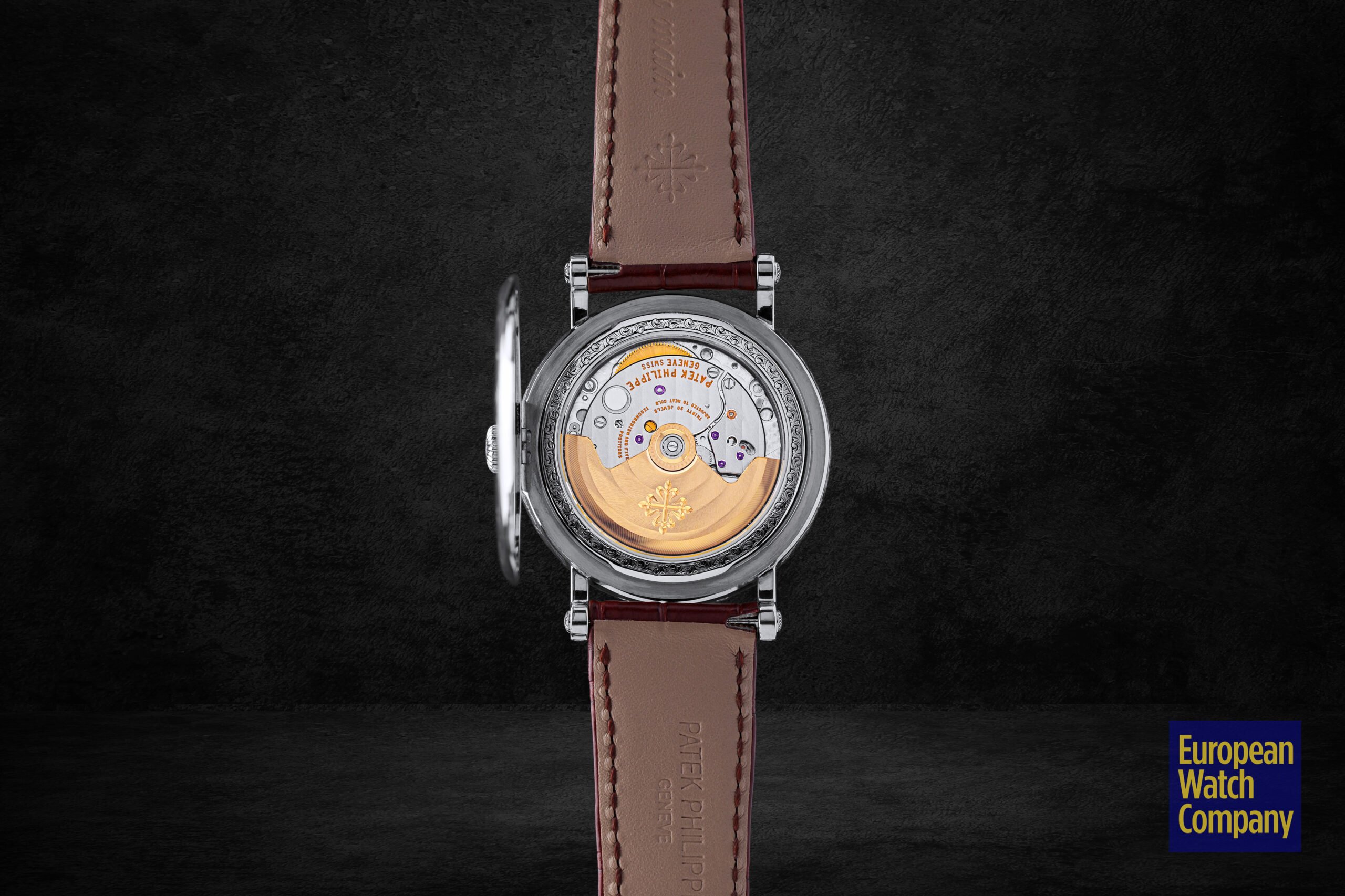
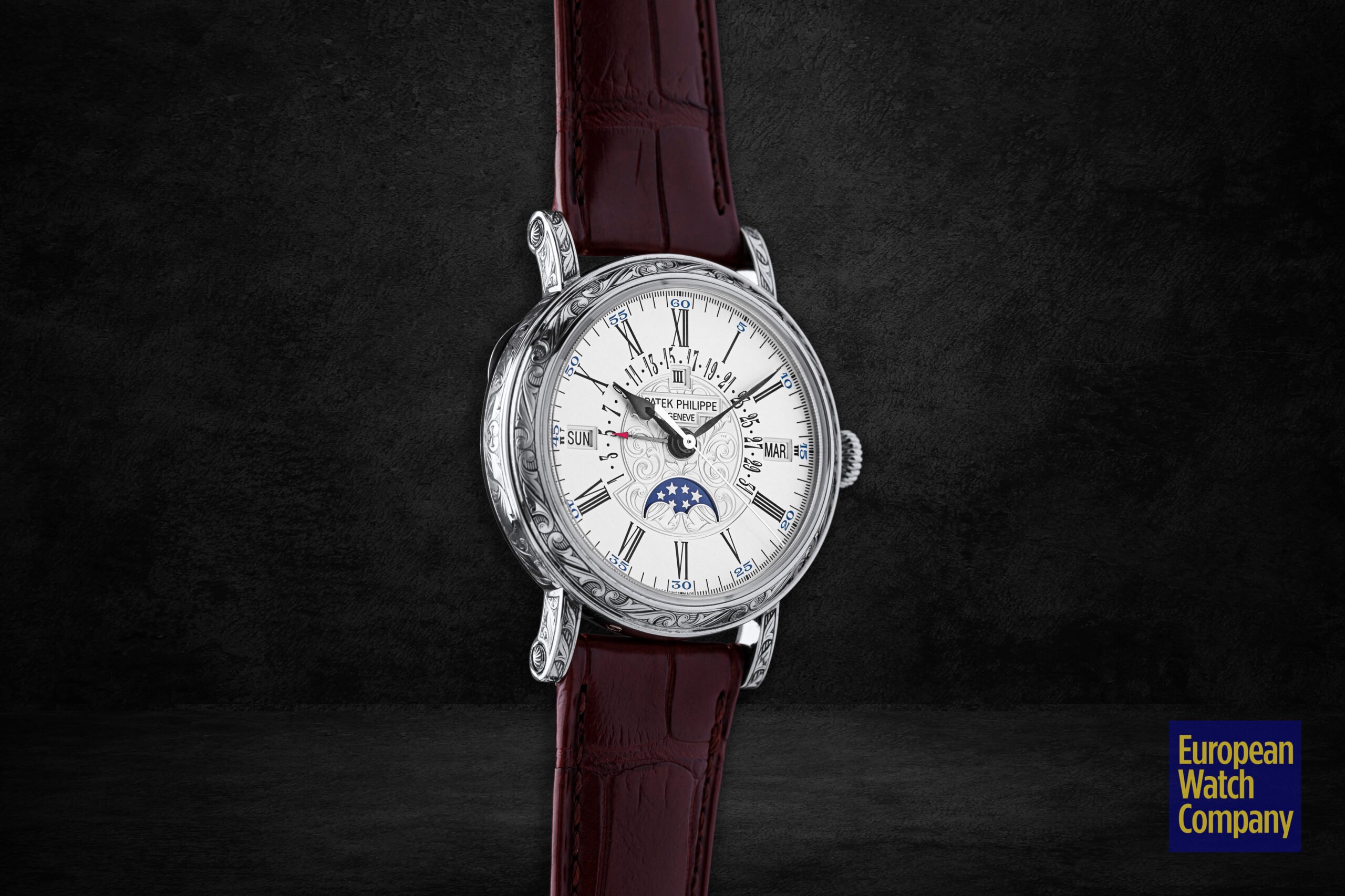
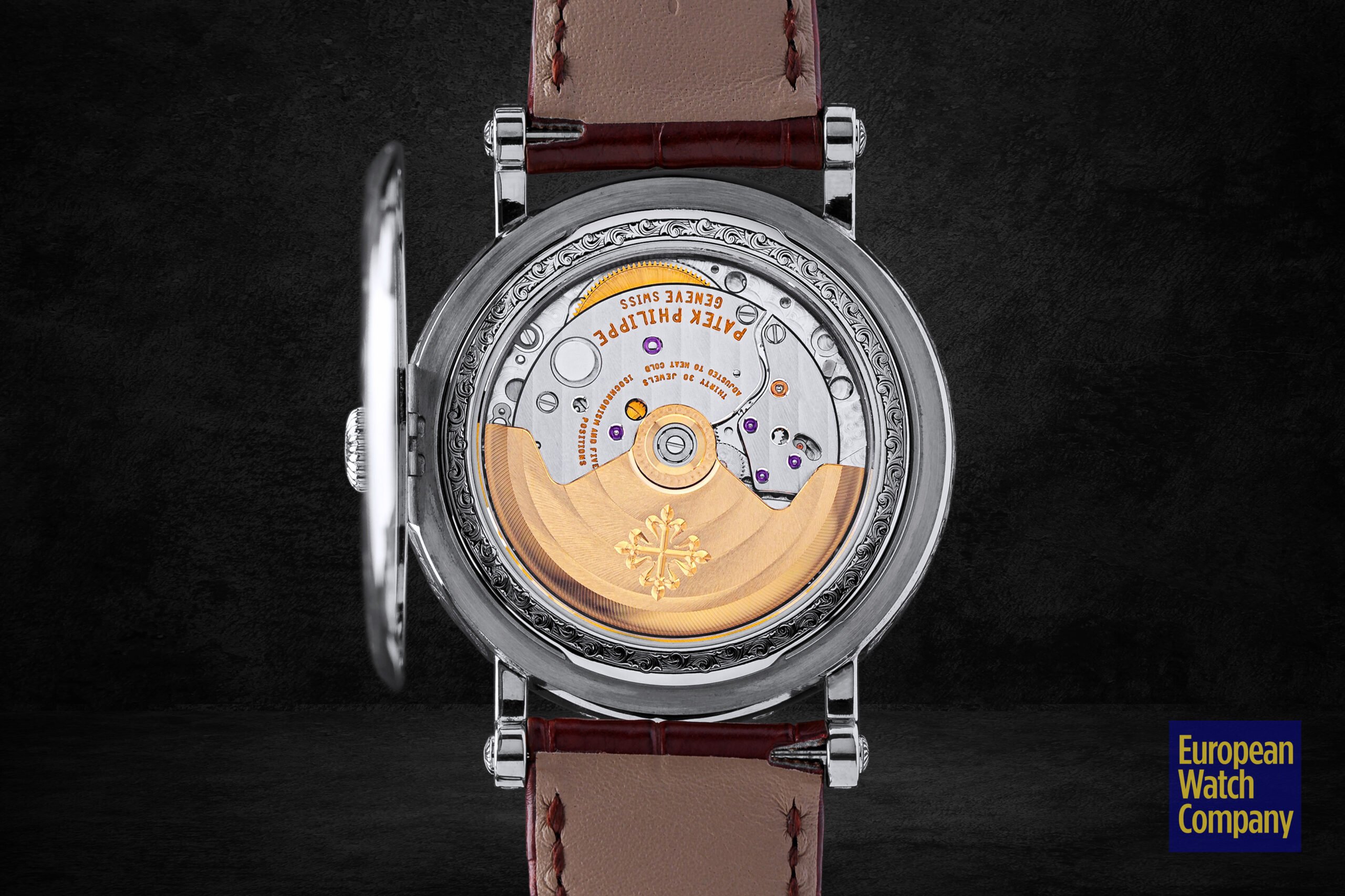
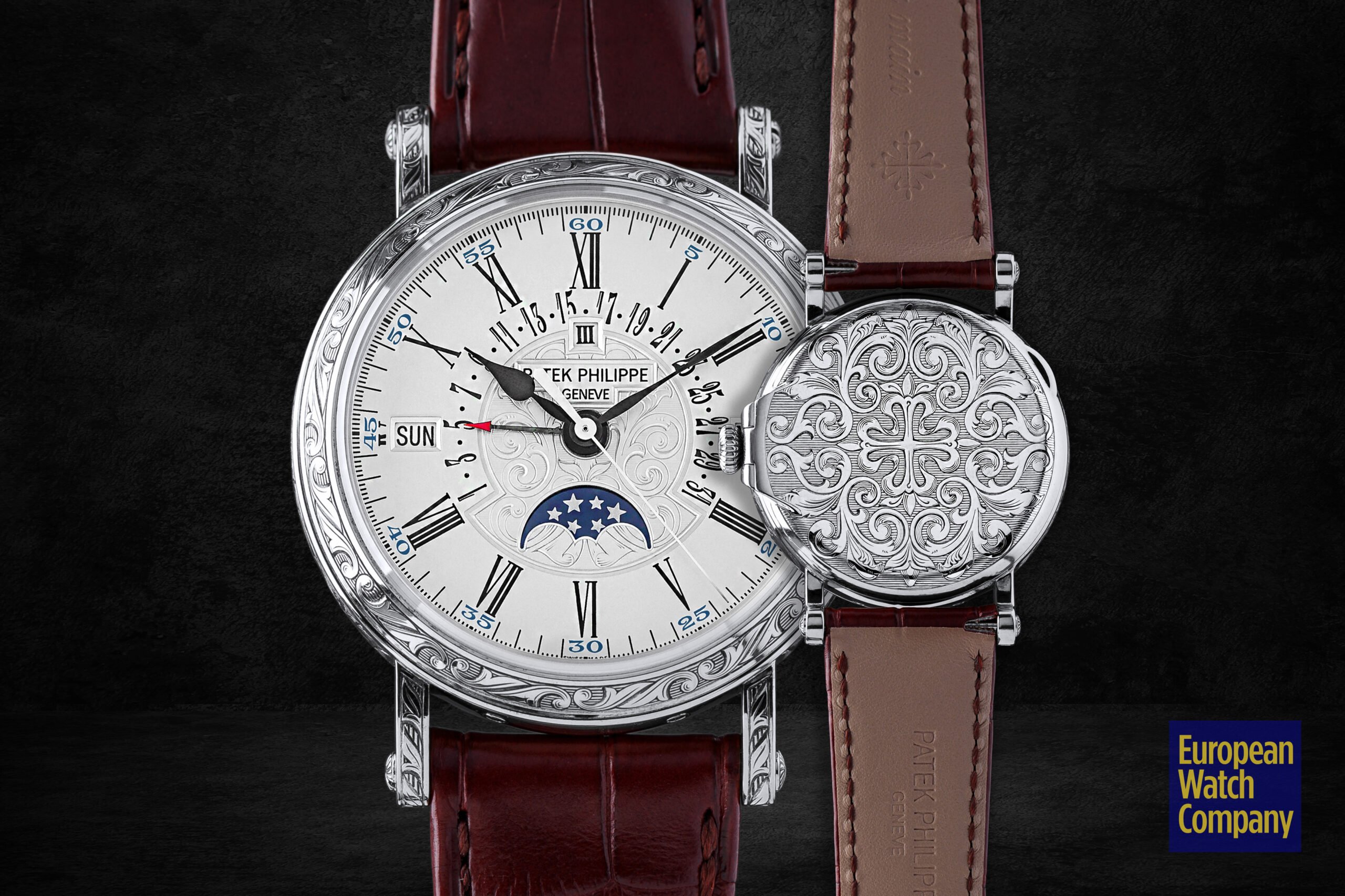
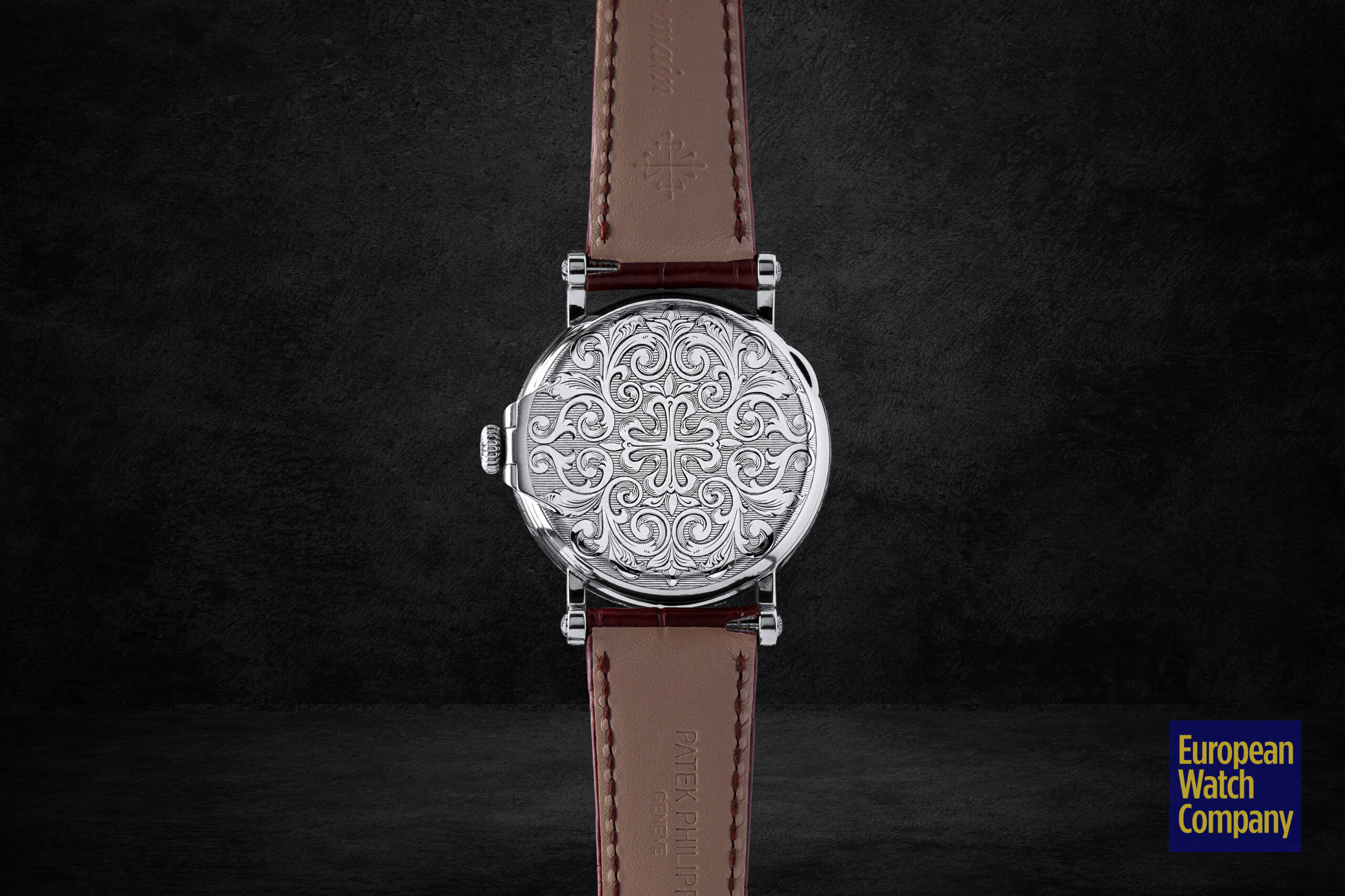
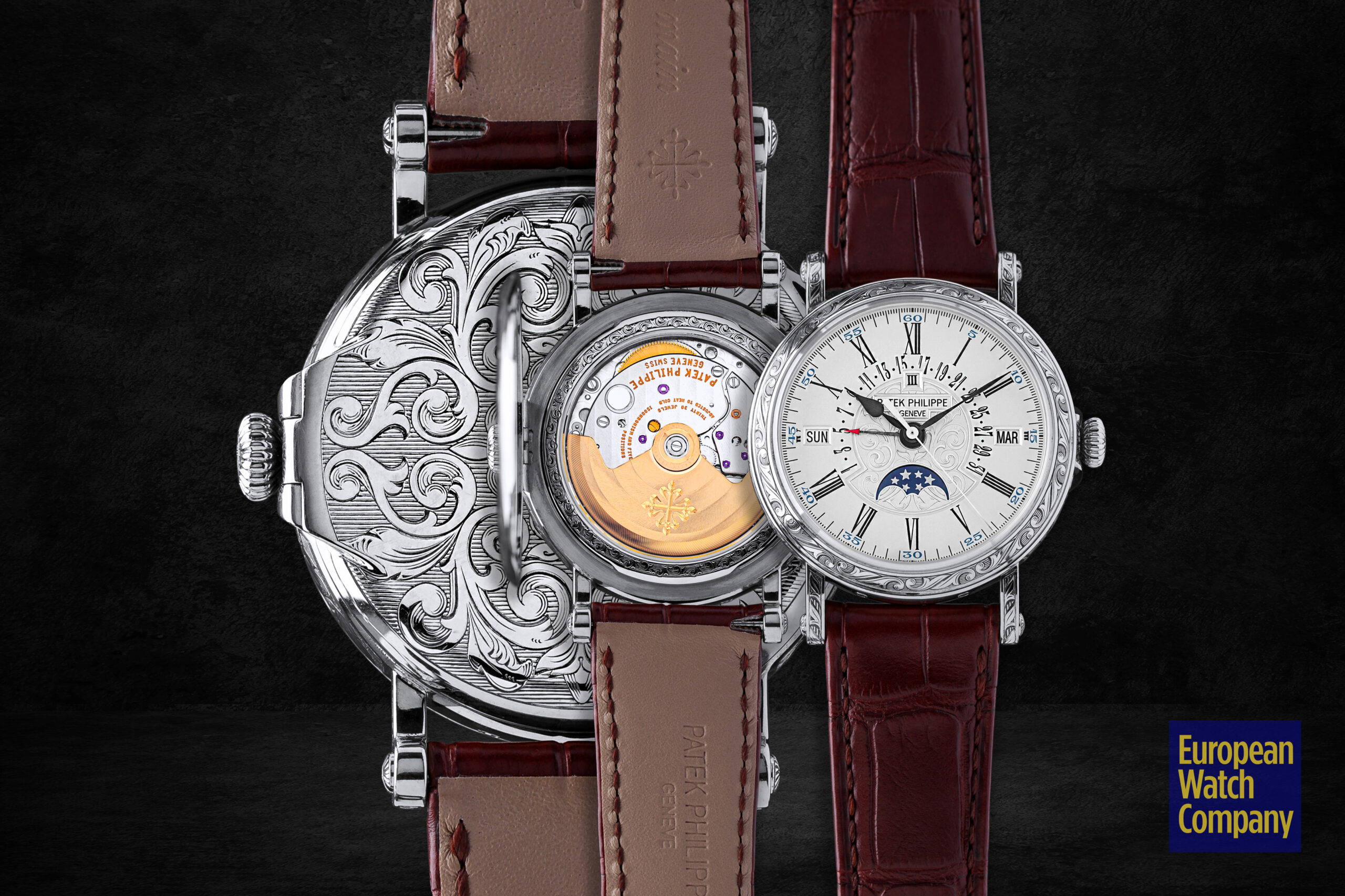
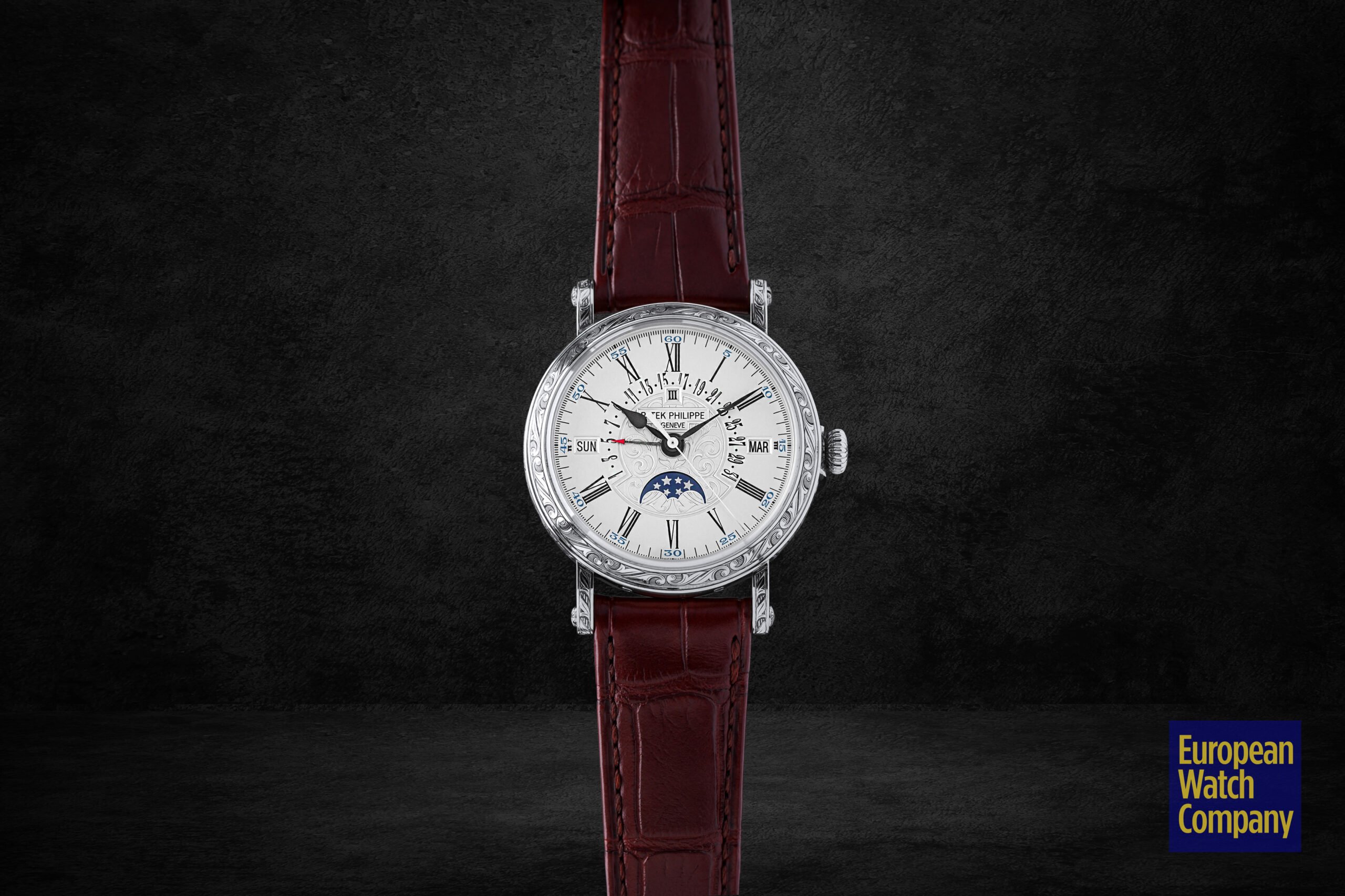
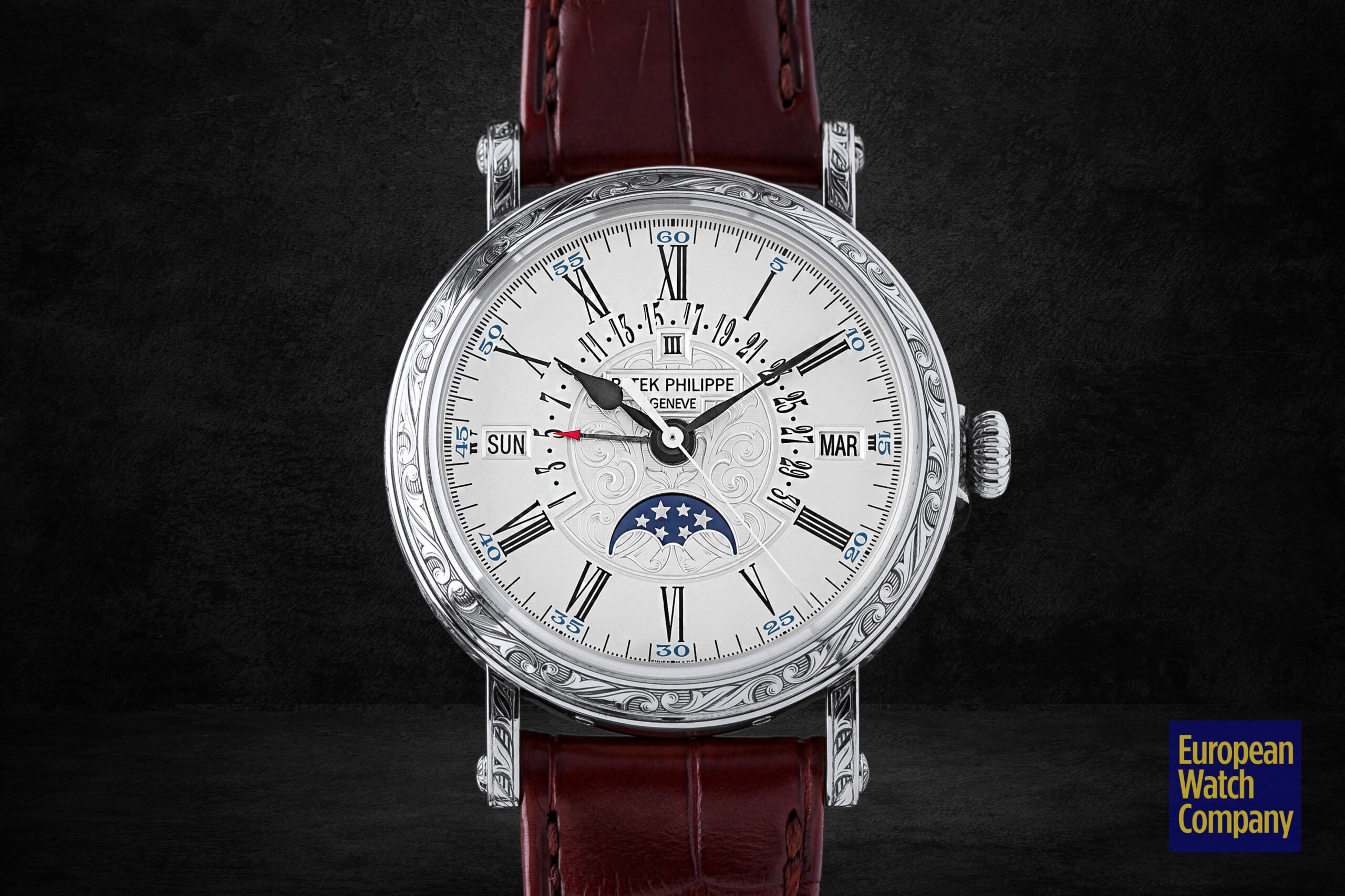
Previous Article
New & Noteworthy: The Patek Philippe 5905/1A Chronograph Annual Calendar
Next Article
Mechanical Art: The Greubel Forsey Double Tourbillon 30° Technique 18k White Gold
Join 75,000+ Other Watch Enthusiasts
Get our new arrivals first.